**********************************************
A NOTE for my friends in the typefounding community (and a disclaimer for those who may have come here by accident): This material is in very, very rough shape; it is far from complete. IT HAS STUFF THAT IS WRONG. I'm putting it online primarily so that you can spot the problems. I would be very grateful if you might inform me of any errors or omissions.
This is a rather long list of typefoundries, with some attempt to trace their complex interrelationships. It also identifies those specimen books which are available online. To a limited extent, I've tried also to identify significant individuals (especially punchcutters and matrix engravers) associated with some of them.
The boundary between a commercial typefoundry and an amateur typefoundry (or a private or fine press casting its own types) is fluid. For the most part, I'll try to include commmercial typefoundries here and amateur typefoundries and fine & private presses casting their own types elsewhere . I have almost certainly mis-categorized some. If I've put your foundry in the wrong location, please let me know!
This Notebook began as a simple (short!) list of those typefoundries for which specimen books were online. Rapidly, however, this it expanded to become a list of all the typefoundries that I could find. I needed to do this for my own education. Traditional typefoundries had complicated evolutions, often changed names with each generation, and were commonly referred to in informal terms. Is it obvious that "MacKellar, Smiths and Jordan" was a descendent of "Binny & Ronaldson," for example? or that (say) "Reed & Fox" was the same as Thorne's which was the same as Robert Beasley, all of which was the Fann Street Foundry, which had its historic origins in Thomas Cottrell (Caslon's "other" apprentice) and that it all became part of Stephenson, Blake, the materials of which are now owned by The Type Museum? Truly the history of typefounding is marvelously byzantine!
In one sense, I've cast my net widely here. I'm including not only traditional typefoundries but also firms and individuals capable of, and more or less set up for, the making of matrices (even if they didn't cast from them). I'm also quite deliberately trying to include the smaller, mostly 20th century, independent typefoundries, especially in America. These have been overlooked in histories of type, and I get the impression that they are sometimes scorned as "mere" casters of purchased matrices. I believe that this view is mistaken. I'm also including private typefoundries and private presses with integral typefoundries, as these are an important part of the revival of typecasting in the 21st century. All of this makes a long list longer.
(Aside: Here is a short essay on why I believe it is important to document all type founding enterprises as typefoundries, even if "merly Monotype houses." )
Yet some things which perhaps "obviously" should be here are not. This list doesn't include the makers of linecasting matrices (even though these are also used for typecasting). Perhaps more suprisingly, given that it includes many "Monotype shops," it includes only those aspects of the Monotype machines dealing exclusively with the casting of individual types for the cases (not composition). Since Monotype typography involves both composition and display, this creates an awkward split. See also, therefore:
Or, for a list that I'm more likely to keep up to date, see A List of All Type Specimen and Matrix Information on CircuitousRoot
The order of the typefoundries listed here is approximately historical, by date of founding. This means that in order to find something quickly you need to learn a bit about the overall history of typefounding - which is not a bad thing. When I don't know the dates for a foundry, though, it's position in this list is just a very rough guess - and probably wrong. Foundries are US-based unless otherwise indicated.
The abbreviation "Fl." signifies "flourished." I use it when I really don't have a clue as to the terminal dates for a foundry, but do have some attestation of activity at a particular time. Thus, "Fl. 1851" might mean that a specimen dated 1851 is known to exist, and "Fl. 1851-1854" might mean no more than that two specimens, from 1851 and 1854, are known to exist (or have existed). This is obviously merely a very rough guide, and it will certainly lead to mistakes in the historical sequencing of foundries (a foundry which "flourished" in 1851 might well have been founded in the 18th century and have endured to the 20th).
I have made some attempt (albeit an inconsistent one) at specifying the actual states or other political entities in which typefoundries existed. This is particularly involved in those areas of Europe which are now Germany, the Netherlands, and Belgium, as none of these modern nations existed during most of the history of typefounding.
If you are unfamiliar with the products of a typefoundry (remember, a typeface is not a "font," and foundries sell type in several forms other than fonts), take a look at the ../ (list of) Typefoundry Products.
This Notebook started out as a short list of foundries for which there were online Specimens. I soon realized two things, though. (1) That the history of typefounding is very much the history of the passing on of matrices and casters, because the effort involved in creating a foundry from scratch is huge. (2) That the survival of typefounding through the 20th century and its present revival in the 21st is due primarily to (a) the often-neglected independent foundries which mostly cast manufactured matrices on Monotype and Thompson equipment, and (b) private or amateur typefounders. Trying to include all of these has epanded this list greatly. So on the one hand this list is already too long. On the other hand, it still misses many foundries. On the third hand, most of the entries are woefully lacking in content. This is a notebook, after all, not a monograph.
Please, PLEASE do not use this information to do your homework! This is not an authoritative list. These are simply my own personal notes. They certainly contain errors.
The following charts attempt to put everything together visually: all the typefoundries that I can identify (and many typefounders, and a few punchcutters and matrix makers) arranged in 2-D charts with a consistent timescale from Gutenberg (or at least Caxton) to the future.
The big problem with these charts is that they're big. At full scale Chart I (which is just Britain) is two meters wide. It is impossible to see it all at once on a computer screen and still make out any detail.
The second problem with a chart such as this is that it shows only existence and hides importance. A huge industrial enterprise may look just like a small cottage atelier. (On the other hand, some small cottage studios had an influence all out of proportion to their size - think of Edward Prince's freelance punchcutting for William Morris, for example.)
By way of compensation, the advantages of comprehensive charts such as these are several:
Anyway, I need these for my own research, so I made them. For what they are or are not worth, here they are.
Chart I. Great Britain and Ireland
[NOTE: I have not updated this chart since 2011. It therefore contains several errors and omissions which have not been corrected. It is useful for getting an overall feeling for the scale and direction of the development of the industry on these islands, but should not be relied upon for particular information.]
If you click on the chart above, you'll get a 2048 pixel wide image which is 2.3 Megabytes and probably won't display well on your browser. You could save it to disk and view it with a better image viewing tool. However, if you have a tool capable of viewing "SVG" format files then the best thing to do is to download and view the original SVG-format version of this chart: typefoundry-chart-1-v06.svg . (You may have to do a right-click or something else in order actually to download this SVG file; browsers are now starting to display SVG images (but not as flexibly as dedicated SVG image tools such as Inkscape.))
The SVG version is modifiable, in case you're crazy enough to want to.
Quick analytic note (because I need to jot this down somewhere): The Standard Version of the demise of typefounding is that the Linotype and Monotype killed it. They came in at the turn of the 20th century and hand typefounding just up and died. Viewing the overall texture of the industry in this chart, it becomes apparent that this isn't so.
The Linotype and Monotype did change the industry dramatically, but for the most part what they did was vastly to reduce the production of body types for newspapers, magazines, and books. This did have a huge effect on the big typefoundries (the five main foundries of the Typefounders' Association). They did in fact consolidate and shrink dramatically.
But - and this is the interesting bit - the rest of the industry did not. Through the 19th century there was an exceedingly diverse, very dense web of smaller typefounding and support firms and individuals outside of the Typefounders' Association. They continued right on into the 20th century without a pause. I presume that their customer base was smaller, more diverse, and more specialized.
What did kill most of them off was simply the Great Depression.
Then of course what killed off the entire typefounding industry was the advent of electronic composition around 1980. The computer, not the Linotype or even phototypesetting, killed metal type. The Art of typefounding is now experiencing a renaissance in the 21st century, but it is just that: a rebirth. There was a pause, and now people have brought it to life again.
Chart II. United States and Canada
From the point of view of a historian, the purpose of the American typefounding industry was to make the history of the British typefounding industry look simple by comparison.
In truth I probably won't do this one, or I'll only do a pathetically limited version. The kind of research a chart such as this requires involves tracking down scattered references in books about other things. That's hard to do when you don't read the languages.
Ditto on excuses for Chart III. India and Japan are the two big areas here. Both have long traditions of excellent matrix making and typefounding.

[England] William Caxton
1474 [in Bruges] - 1477 [in England] - 1492. Caxton is famous enough not to require much comment. Reed (following Blades) identifies his Type No. 4 (1480) as the first one certainly cast in England. Succeeded by Wynkyn de Worde, Some founts (of matrices, I presume) of his were "supposed" to have passed on to James and Thomas Grover,

[Augsburg, HRE] Ratdolt
Fl. 1476 - ? (d. 1528). Erhard Ratdolt. In Venice 1476-1486; then in the Free Imperial City of Augsburg, in the Holy Roman Empire. On April 1, 1486, Ratdolt issued what is now the oldest surviving type specimen. (Reprinted in its entirety in , e.g., Füssel, Stephan, ed. [reprint of] Manuale Tipografico de Cavalieri Giambattista Bodoni. (Köln: Taschen, 2010.) Portions were reprinted in Updike's Printing Types (1922). [TO DO: SCAN])

[England] Faques
1504-1511. William Faques. See Reed pp. 93-94. It's less clear from Reed that Faques cast his own types.

[England] John Day
1546 - 1584. Reed says of him "he was his own letter-founder; and from his day English letter-founding may be said to have started on a separate career." (95) Reed isn't specific about the destination of his materials, but in a chart (221) indicates that they passed through "privileged [i.e., officially authorized] printers" to the Polyglot Founders (which would be one or more of John Grismand, Thomas Wright, Arthur Nicholls, or Alexander Fifield). A note in the { Davis & Carter edition of Moxon (p. 358) indicates that by 1669 he was no longer one of the licensed typefounders.

[United Netherlands] Elzevir
Fl. 1580s? - 1681 Leiden.
Updike, in Printing Types, vol. 2, p. 17, cites a letter by the widow of Daniel Elzevier in 1681 attempting to sell the typefoundry established by Louis Elzevier (who began printing in Leiden in the 1580s).

[England] Benjamin Sympson
fl. 1597. Reed's identification of John Day (1546-1584) as being the first in England who with certainty cast his own type is based upon his work. By way of contrast, the first mention in any official document of a person engaged in typefounding is Benjamin Sympson, required by the Stationers' Company to post bond as surety that he would not cast or sell type without telling them for whom. Reed (128) says that nothing more is known of him.

[England] John Grismand
In a Decree of 1637 appointed one of the four authorized typefounders in Britain, along with Thomas Wright, Arthur Nicholls, and Alexander Fifield. Grismand atttested at least as late as 1649 (Reed 166).
These four are sometimes called the "Polyglot Founders" because types cast by at least some of them must have been used for Bishop Brian Walton's 1654-1657 London Polyglot Bible or the Star Chamber founders because that body issued the Decree authorizing them.

[England] Thomas Wright
In a Decree of 1637 appointed one of the four authorized typefounders in Britain, along with John Grismand, Arthur Nicholls, and Alexander Fifield. Talbot Baines Reed has little more to say about him.
These four are sometimes called the "Polyglot Founders" because types cast by at least some of them must have been used for Bishop Brian Walton's 1654-1657 London Polyglot Bible or the Star Chamber founders because that body issued the Decree authorizing them.

[England] Alexander Fifield
In a Decree of 1637 appointed one of the four authorized typefounders in Britain, along with John Grismand, Thomas Wright, and Arthur Nicholls. Talbot Baines Reed has little more to say about him.
These four are sometimes called the "Polyglot Founders" because types cast by at least some of them must have been used for Bishop Brian Walton's 1654-1657 London Polyglot Bible or the Star Chamber founders because that body issued the Decree authorizing them.

[England] Arthur Nicholls, Nicholas Nicholls
In a Decree of 1637 Arthur Nicholls appointed one of the four authorized typefounders in Britain, along with John Grismand, Thomas Wright, and Alexander Fifield. Succeeded by his son Nicholas Nicholls.
{ Moseley et. al., Founder's London A-Z , observe that Nicholas Nicholls was "The earliest English typefounder to whom types can be attributed" and that in 1665 he issued the earliest known type specimen by an English founder.
These four authorized typefounders are sometimes called the "Polyglot Founders" because types cast by at least some of them must have been used for Bishop Brian Walton's 1654-1657 London Polyglot Bible or the Star Chamber founders because that body issued the Decree authorizing them.
{ Davis & Carter, in their edition of Moxon (p. 358)} observe that in 1669 the four licensed typefounders were Joseph Leigh, Goring, Head, and Nicholls.

[England] Joseph Moxon
1659 - 1683. Succeeded by Robert Andrews.
Technical writing in English starts with Moxon.
See ../../ Making Printing Matrices & Types -> Reprinted Literature -> General Literature for links to digital versions of Moxon's work in typefounding and printing.

[England, GB] Godfrey Head, later Robert Mitchell
fl. ca. 1669 - 1739.
{ Davis & Carter, in their edition of Moxon (p. 358)} observe that in 1669 the four licensed typefounders were Joseph Leigh, Goring, Head, and Nicholls. Robert Mitchell (former servant to Thomas Grover (Reed 206)) succeeded to Head in 1690 ( Founder's London A-Z, pp. 11, 32). Reed notes that in 1739 the foundry was sold to William Caslon I and Thomas James and divided between them.

[England] Joseph Leigh
fl. ca. 1665 - ca 1675.
{ Davis & Carter, in their edition of Moxon (p. 358)} observe that in 1669 the four licensed typefounders were Joseph Leigh, Goring, Head, and Nicholls, and that by 1675 this list had been reduced to Leigh, Goring, and Head.

[England, GB] Oxford University Press, Fell Era
1667 - "early 18th century" Oxford. Walpergen (d. 1714) cutting music punches there ca. 1685 (Reed 208). Silvester Andrews (son of Robert Andrews) succeeded to Walpergen "before 1714" (Reed 209). Silvester Andrews' foundry and his father Robert Andrews' foundry purchased 1733 by John James. Oxford foundry "in disuse" from early 18th century { "Typefoundry" [the blog of James Mosley] , "The Materials of Typefounding" (2006-01).}
Foundry revived 1853 {Moseley} and { Rice, Roy. Matrix Making at the Oxford University Press: With notes on the same process as used at The Recalcitrant Press. Atlanta, GA: The Recalcitrant Press, 1982. }

[England] Thomas Goring
fl. ca. 1669 - ca 1675.
{ Davis & Carter, in their edition of Moxon (p. 358)} observe that in 1669 the four licensed typefounders were Joseph Leigh, Goring, Head, and Nicholls, and that by 1675 this list had been reduced to Leigh, Goring, and Head.

[England, GB] Grover
1674-1728. James Grover (father) and Thomas Grover (son). Thomas Grover "servant" (= apprentice?) to Nicholas Nicholls. Thomas Grover died 1728. Inventoried but not purchased by Caslon I. Stored by a printer, Mr. Nutt, who cast from the materials for his own use. Acquired 1758 by Thomas James.

[England, GB?] Robert Andrews
1683- Successor to Joseph Moxon. Reed (194): "His foundry, of which, Mores informs us, Moxon's matrices formed the most considerable part, was, next to that of the Grovers, the most extensive of its day; and it would appear that, for some time at any rate, these two shared between them the whole of the English trade." Robert Andrews (d. 1735) retired 1733, passing his foundry on to his son but the matrices for Canon Roman and Italic to (Reed 197).
Robert Andrews son was Silvester Andrews, who established a foundry of his own at Oxford.

[GB] Thomas and John James
1710-1722 (1782). Acquired the materials of most of the previous letter foundries. In turn acquired by Mores after John James' death in 1772. Disposed of at auction in 1782, four years after Mores' death in 1778. Some matrices acquired by Fry.
Reed calls John James "the last of the old English letter founders" (p. 221) and calls the period terminated by the sale of his foundry "a chapter of English typography, which, while though not the most glorious, is certainly not the least instructive through which it has passed." (230) Moseley, James, Justin Howes, and Nigel Roche. Founder's London A-Z. (London: The [European] Friends of the St. Bride's Printing Library, 1998.) , p. 10, gives his location in 1710 as Alderm Anbury, London.

[FR] Didot Family
Fl. Early 18th c. - late 19th c. Amalgamated into Fonderie Générale (possibly with a (partial?) diversion into Plon Frères).
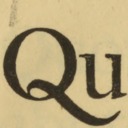
[GB, UK] William Caslon
1720 - 1937. Acquired by Stephenson, Blake & Co.. (But see also Caslon, Ltd.)
William Caslon pressed the reset button on English typefounding. When you consider, further, that he trained both Cottrell and Jackson, and that Jackson trained Figgins, his influence on typefounding is hard to overestimate.

[GB] Jacob Ilive
ca. 1730 - 1740 (Reed 346ff). He was noted for his opinions, and { Moseley et. al., Founder's London A-Z , p. 18} note the location of his imprisonment in 1756 for publication.

[GB] Dummers
fl. 1734. Dutch, resident in England. Apparently a punchcutter who cut a fount of Pica Samaritan for Caslon. {Reed 345}

[GB] R. Wetschein (or Wetstein)
fl. 1733-1743. Amsterdam. Employed Jalleson as a punchcutter before he (Jalleson) emigrated to England. {Reed 345, 349} Purchased by Enschedé.
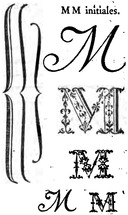
[FR] Fournier
by 1737 - 19th c. Pierre Simon Fournier (aka Simon Pierre Fournier, Fournier le jeune) 1712-1768.
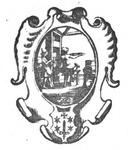
[NL] Enschede
1703 - present as a firm. 1743 - 20th century as typefounders. Typefounding in 1743 started with the acquisition of the foundry of Henrik Wetschein [Wetstein].

[NL?, GB] Jalleson
[dates unclear] Dutch. There is a puzzle here.
On the one hand, {Reed, p. 346} says that, while still in Amsterdam, Jalleson served, in 1733, as a punchcutter to R. Wetschein. She places him in England starting in 1734. This would have been after the death of Thomas Grover, while Grover's foundry was being stored (and possibly used) by a printer, Mr. Nutt.
On the other hand, { Moseley et. al., Founder's London A-Z , p. 25} say that "Samuel Jalleson, Gent." engaged in a "short-lived partnership in the Grover foundry" and then after that took over a printing busines in 1725 and "poossibly continued casting there until c. 1729".

[FR] Lamesle
Fl. 1742 Paris. Claude Lamesle. N.B., 1742 specimen shows Civilité.

[FR] Gillé
1748-1789. Joseph Gaspard Gillé. 1789-1827. Joseph Gaspard Gillé fils. Paris. Merged into Laurent, Balzac & Barbier.

[GB, UK] Alexander Wilson (Glasgow Letter Foundry)
1749 - ca. 1850. Glasgow, Edinburgh, Dublin, London, Two-Waters (Hertfordshire). Closed and split in 1850. The London (ex-Glasgow) and Two-Waters branches were purchased by Caslon & Sons (the main line of the Caslon foundry) just as they became H. W. Caslon & Co. The Edinburgh and Dublin branches were purchased by Marr and continued until at least the 20th century.

[GB] John Baine (London; Edinburgh)
1749 - [ca. 1787?] John Baine previously with Alexander Wilson (Glasgow), with a side-trip to Wilson's Dublin branch. In 1749, Baine set up on his own in London. Back in Edinburgh by 1778; began working with his grandson there. Moved to USA ca. 1787 and set up John Baine & Grandson in Philadelphia. See also { Annenberg, 32-34}

[GB] John Baskerville
1750-1775. No successors, but William Martin, private typefounder for The Shakespeare Press, was the brother of Baskerville's apprentice Robert Martin. (Reed 330) Employed John Handy as a punchcutter; Handy later worked for Miles Swinney, (Reed 353)

[GB] Anderton
fl. 1753. "... appears to have been one of the earliest of English provincial letter founders [Birmingham]" There are two curious links for Anderton. First, he worked in Birmingham at about the same time as Baskerville (though I have read no indication of any connection). Second, he employed as a mould maker Samuel Caslon, "brother to [William] Caslon I ... after having left [Caslon's] on account of some dispute." {Reed 350}

[FR] Mozet
fl. 1754. Cited in an as yet unknown-to-me article in Philip Gaskell and William White, Eds., The Book Collector, Vol. 5 (1969): " Epreuves des Caractères de la Fonderie de Claude Mozet, Fondeur & Graveur de Caractères d'Imprimerie . A. Nantes, ... 1754" (snippet via Google Books).

[GB, UK] Thomas Cottrell, later Fann Street Foundry
1757-1906. Cottrell & Jackson. Robert Thorne. As Fann Street Foundry (from 1810 on). William Thorowgood. Robert Besley. Benjamin Fox. Charles Reed. Closed 1906. Material to Stephenson, Blake & Co.. [unverified]
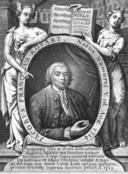
[Austrian Netherlands] Rosart
Ca. 1761 - ca. 1777. Brussels. Succeeded by Decellier.
[GB, UK] Fry, Type Street Foundry, Polyglot Foundry
1764-1828 Bristol. Joseph Fry and William Pine. J. Fry & Co. (from 1776). Edmund and Henry Fry admitted to partnership 1782. Edmund Fry & Co. (from 1787). Type Street Foundry built 1788. Edmund Fry and Isaac Steele (from 1794). Edmund Fry and Son (after 1816). Circa 1824 foundry name changed to Polyglot Foundry. Acquired in 1828 by William Thorowgood, Fann Street Foundry [see Cottrell, above] .
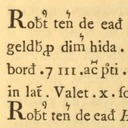
[GB, UK] Joseph Jackson, William Caslon III & IV
1763 - 1819. Acquired by William Caslon III and later run by William Caslon IV. Acquired by Blake, Gannett & Co. (later Stephenson, Blake).
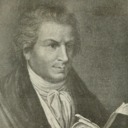
[Duchy of Parma] Bodoni
Ca. 1768 - 1813. Parma, Duchies of Parma and Piacenza. Appointed director of the Stamperia Reale of the Duke of Parma in 1768. First specimen book 1771. Final specimen book, the Manuale Tipografico, published posthumously (1819).
No direct relation to the 20th century Officina Bodoni.

David Mitchelson
By 1769, in Boston. Until at least 1787, in New York. May have cast the first type in anglophone America. { Annenberg, 19}

Abel Buell
About 1769 to possibly 1793. Died 1821. May have cast type during the revolutionary war. { Annenberg, 20-24}

[NL] Voskins & Clerk
fl. 1770s. Rotterdam. Sold some materials to the father of Adam Gerard Mappa; { Annenberg, 32-34}

Christopher Sower II
1770-1778. Acquired complete foundry (molds and punches, at least) from Germany. Employed Justus Fox and Jacob Bay. Foundry dismantled and sold during revolutionary war. { Annenberg, 26}

[FR] Louis Delacolonge
fl. 1773. Lyon. Les caractères et les vignettes de la fonderie du Sieur Delacolonge, À Lyon. Facsimile as Henry Carter. The Type Specimen of delacolonge. (Amsterdam: ?, 1969). Extracts in de Jong, vol. 1, pp 86-87. N.B., shows Civilité.

Jacob Bay
1774 - 1789. Workman for Christopher Sower II. Left Sower II in 1774 and set up his own foundry. Purchased some of the materials of Sower II's foundry at its dissolution in 1778. Sold his foundry to a printer, Francis Bailey, in 1789. { Annenberg, 27-28}

[GB] Isaac Moore
1776 - at least 1787. Isaac Moore was a punchcutter and the foundry manager for Fry. Left 1776 to set up as "letter founder and printer". Succeeded by Joseph Moore, his son, 1781. {Reed} { Moseley et. al., Founder's London A-Z , p. 18, 28}

[GB] Joseph Fenwick
fl. 1770. A "mould-mender in ordinary" for Caslon (probably William Caslon II), who cut one fount of Two-Line Pica Scriptorial in difficult circumstances. Reed isn't clear, but he wasn't paid for this and he may have been moonlighting. {Reed 350} Not sure if any connection with Henry Fenwick, fl. 1805-1810.

Justus Fox
By 1778 to 1805. Workman for Christopher Sower II. Set up his own foundry at some point (not sure when) and upon the dissolution of Sower II's foundry he purchased some of its materials. { Annenberg, 27-29} He died in 1805 and his materials were sold in 1806 to Samuel Sower, who was somewhere in the process of starting what became the Baltimore Type Foundry. (Annenberg 29, 51)
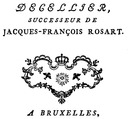
[Austrian Netherlands] Decellier
fl. 1779. Brussels. Successor of Rosart.

[Republic of Zurich] Orell, Gessner, Fuesli & Co.
fl. 1781. [n.b. Zurich was an independent republic from 1648 to 1798]

[NL] De Groot
fl. 1781. The Hague. Extracts in de Jong, vol. 1, pp 88-89. de Jong says they were "one of the oldest type foundries in the Netherlands."

[GB, US] Archibald Binny
? - 1793/1795. Archibald Binny (1762/1763 - 1838). Apprenticed as a printer in Scotland; learned typefounding there and set up as a founder and printer. Emigrated to the US 1793 or 1795, bringing his foundry tools. Then started Binny & Ronaldson with James Ronaldson's financial backing. { Annenberg, 65}

[GB] Myles Swinney
fl. 1785. Birmingham. Employed John Handy, former punchcutter for Baskerville. {Reed 352}

[GB, UK] William Martin
1786-1790; 1790-1817. Reed (330) says that William Martin, as the brother of Baskerville's apprentice Robert Martin, "acquired his first knowledge of the art at the Birmingham foundry" [that is, at Baskerville's]. In 1786 he "entered into the service of" the King's bookseller, George Nicol (1740? - 1828) as a punchcutter and typefounder. Nichol starte The Shakespeare Press in 1790 and Martin continued as private typefounder to the Press. He created (designed, cut, and cast) a typeface for the Press which has since been revived as "Bulmer" (after the printer to the press, William Bulmer, who, with Nicol, provided advice). Materials to Caslon by purchase in 1817. (Reed 330)

Benjamin Franklin Bache
1786 - 1805. While in Paris with his grandfather Benjamin Franklin, Bache studied punchcutting with Francoise Ambroise Didot and "cut his first punch" in 1785. Franklin purchased a "complete foundry" from Simon Pierre Fournier for his grandson. This arrived in the US in 1786. Bache seems not to have wanted to be a typefounder. He died in 1798. Equipment (molds and tools only) sold by his widow in 1806 to Binny & Ronaldson. { Annenberg, 29-32}

[Austrian Netherlands] Bricx
Fl. 1787. Ostende. Bernard Dominique Bricx. Extracts in de Jong, vol. 1, pp 90-91.

John Baine & Grandson (Philadelphia)
ca. 1787 - 1799. Philadlphia. Formerly [GB] John Baine (London; Edinburgh), and with [GB] Alexander Wilson before that. Tools to Binny & Ronaldson in 1799.
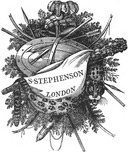
[GB] Simeon & Charles Stephenson (British Letter Foundry)
1789-1797. London. Originally Bell & Stephenson's British Letter Foundry. Employed Richard Austin as a punchcutter (Austin later started what became the Imperial Letter Foundry [or Sharwood's] under his own name.) (No connection to Stephenson, Blake.) Materials auctioned 1797, disposition unknown.

[FR] Imprimerie du Louvre [etc.]
1790 - 1809. Paris. Succeeded Imprimerie Royale. Complex history during the Revolution; became in 1809 the Imprimerie Impériale.

Adam Gerard Mappa
1790- In the 1770s, the father of Adam Gerard Mappa had purchased some materials from Voskins & Clerk in Rotterdam, but was unable to set up in business as a typefounder. A.G. Mappa emigrated to the US and announced his foundry by 1790. Terminated 1794. "Split into sections" and sold; some matrices to Binny & Ronaldson. { Annenberg, 32-34}

[GB, UK] Vincent Figgins
1792 - 1933. Figgins was Jackson's apprentice, but unable to purchase that foundry at Jackson's death. He therefore started his own. Later R. H. Stevens (his grandson). Merged in 1933 with P. M. Shanks [Patent Type Foundry] to form Stevens, Shanks.
By 1793, the five major British typefounding firms ( Caslon (the main family firm), William Caslon III (running Jackson's foundry), Fry, Figgins, and Stephenson, Blake) had formed the Association of Typefounders as an attempt at a cartel to control the trade. ({ Moseley et. al., Founder's London A-Z , p. 27} reproduces the signatures of their principals from the Association's Minute Book of that year.)
This Association ceased at some point thereafter, but was re-formed in the 1870s.

Samuel Sower
By 1794 to at least 1805. "The exact date and operation of the type foundry is debatable." Presumably it was not done with the materials of the former foundry of his father, Christopher Sower II. However, in 1805 he purchased the foundry of Justus Fox, a former workman for Christopher Sower II who had set up his own foundry with materials purchased from Christopher Sower II's foundry. { Annenberg, 26, 29}

[GB, UK] Bower [and Slater and Bacon, variously]
1797 - 1852. Originally employed William Garnett, who specialized in the direct cutting of very large laminated matrices for "sanspareil" types; Garnett left and went on to found the firm which became Stephenson, Blake.
The Bower firm ws first Slater & Bower (1797-1806), then Slater & Bacon (1806-1809), then Bower, Bacon & Bower (1809-1852). Materials sold at auction. See { Millington, Roy. Stephenson Blake: The Last of the Old English Typefounders. New Castle, DE and London: Oak Knoll Books and The British Library, 2002. } for a reconstruction of these events.
Foreign Connections of US Typefounding
As typefounding in what became the US began in the colonial period, it isn't surprising that it had many early links to foreign and overseas typefounding (though it is curious just how many of these ties were to Scotland). There have been interesting links more recently, however, including several connected with smaller-scale typefounding in the 20th and 21st centuries. It isn't practical to show all of these on the chart above (too many lines). Here, then, is a list:

Binny & Ronaldson
1796 - 1833. Archibald Binny previously a typefounder in Scotland; emigrated to US 1793/5, bringing his tools. Foundry started 1796. Some matrices from foundry of Adam Gerard Mappa (these of Dutch origin: Voskins & Clerk ). In 1806 equipment formerly of Benjamin Franklin Bache (this of French origin: Simon Pierre Fournier; may have included the "Johnson Pica.") Archibald Binny retires 1815. James Ronaldson succeeded by his brother Richard Ronaldson 1823. Bought by Johnson & Smith in 1833 (evolved thence through Johnson to MacKellar, Smiths & Jordan and, in 1892, ATF.

Baltimore Type Foundry
ca. 1794 or 1799 - 1892. Baltimore, MD. Founded by Samuel Sower (d. 1820; (tenth son of Christopher Sower II, who cast type from 1770-1778) either circa 1794 with William Gwynne (Annenberg is dubious about this) or (more probably) by 1799.
1879 sold to Henry Lafayette Pelouze, owner of the Richmond Type Foundry. Operated as a branch of that foundry until 1883.
1883 purchased by Charles J. Cary and operated independently. Merged into ATF at its formation in 1892. { Annenberg, 115}
Unrelated to the later Baltimore Type & Composition Company / Baltimore Matrix ("Baltotype").

[GB, UK] Lench
by 1799 to at least 1834 (John Lench). Also David Lench (1819, 1823) and Thomas Lench (1823). { Moseley et. al., Founder's London A-Z , p. 20, 23}

[FR] Duplat (Polytypes?)
17?? - 1823 J. L. Duplat. 1723 - 1824 Widow of J. L. Duplat. Paris. Merged into Laurent, Balzac & Barbier.

[FR] Durouchail
17?? - 1836 P. Durouchail. Paris. Acquired by Laurent & De Berny.

[ES] Imprenta Real
fl. 1799. Madrid. Extracts of Muestras de los Punzone y Matrices de la Letra que se funde en el Obrador de la Imprenta Real (1799) in de Jong, vol. 1, pp 96-99. I can't read Spanish, but according to Google's translation service "El Obrador" probably means "the workshop" (although, humorously, another translation says it means "the bakery").

[GB, UK] James Kerby
fl. 1801. "press manufacturer and typefounder" { Moseley et. al., Founder's London A-Z , p. 26}

White's Type Foundry
1804-1862. Elihu White and William Wing (d. 1817). White and Wing patented a type mold in 1805; White used Edwin Starr to infiltrate Binny & Ronaldson to learn how to make type. (Starr went on to co-found the Starr's Type Foundry, and participated in many foundries thereafter.) Full operation of the White & Wing foundry circa 1809. Employed Nathan Lyman ca. 1810-1829 (Lyman later to Franklin Letter Foundry (in Albany) and Buffalo Type Foundry).
In 1817, established branches in Charlestown, Buffalo, and Cincinnati. The Charlestown branch soon was sold and moved to Boston to become the Boston Type Foundry. N.B. the Buffalo branch seems unrelated to the later Buffalo Type Foundry established in 1835 by White's former employee and one-time partner Nathan Lyman.
William Hagar apprenticed in the foundry; left in 1823 to form Hagar & Pell. Returned to White's in 1835 (whereupon the firm's name became Hagar & White). Left again in 1839 (in 1840 forming a partnership
In 1832 acquired A. W. Kinsley & Co. (Franklin Letter Foundry), but White sold his share in 1835.
In 1855 founded a Chicago Branch, which became Marder, Luse & Co.,
Sold in 1862 to several employees, whereupon it became Farmer, Little & Co. in 1862. { Annenberg, 236-238}

Robert Lothian (in Edinburgh)
Before 1806. British histories such as Talbot Baines Reed's do not mention Lothian. He emigrated to the US in 1806 and started a typefoundry in New York. He is perhaps better known as the father of George Buxton Lothian, one of the notable characters of early American typefounding. { Annenberg, 176-177}

Robert Lothian (in New York)
1806-1810. Robert Lothian (d. circa 1810). His son, George Buxton Lothian, trained in his foundry and went on to start the [George] Lothian Type Foundry (1st iteration) with Peter Cortelyou. The materials of the Robert Lothian (NY) foundry were sold to Binny & Ronaldson. { Annenberg, 176-177}

[The Starr Family]
fl. ca. 1806-1881. This isn't a specific foundry, but rather a family which produced many members who worked in or themselves started significant early American foundries. The six Starr brothers were: Charles, Richard, Henry S., Edwin, James Fosdick, and William (who apparently was not connected with type or printing). Annenberg calls them the "first family" of American typefounding.

[FR] Imprimerie Impériale / Nationale
1809 - 1870; 1870-1994. Paris. Succeeded Imprimerie de lá Republique. Renamed Imprimerie Nationale in 1870. Spun off into a company in 1994 and over time privatized. Now the Atelier du Livre d'Art et de l'Estampe, a studio within a private computer security firm bearing the name Imprimerie Nationale .
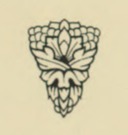
[UK] Miller & Richard
1809 - 1952 Edinburgh. Their San Francisco branch office, opened by 1878, became Palmer & Rey in 1882. Miller & Richard acquired by Stephenson, Blake in 1952.

[GB, UK] Henry Fenwick
fl. 1784-1810. "Master printer, bookseller, and maker and seller of types and presses." { Moseley et. al., Founder's London A-Z , pp. 24, 30} Not sure if any connection to Joseph Fenwick, fl. 1770.

Starr's Type Foundry
circa 1812 - circa 1817. New York. Formed by three of the Starr Brothers: Richard Starr and James Fosdick Starr, taking Edwin Starr (late of White's Type Foundry into partnership). Sold circa 1817 to D. & G. Bruce. { Annenberg, 230} (so the foundry's materials must have gone to Bruce, not to the next Starr foundry ( Reich, Starr & Co.)). Edwin Starr went on to the Boston Type Foundry. Richard Starr went on to the Reich, Starr & Co. James Fosdick Starr (d. 1833) seems to have gone on to a career as a stereotyper (Annenberg p. 115).

[UK] Anthony Bessemer
1813-1832. Father of the Bessemer of steelmaking fame. In 1822 took in partnership John J. Catherwood, late of the [Henry] Caslon [II] firm. Bessemer retired 1832 and his foundry was auctioned. (Reed 358) ( Founder's London A-Z gives an address for him in 1834, but it is not clear what he was doing at that address). Moseley, James, Justin Howes, and Nigel Roche. Founder's London A-Z. (London: The [European] Friends of the St. Bride's Printing Library, 1998.) , p. 14 note that Bessemer was a "prolific punchcutter" who cut 44 types for the Caslon firm.
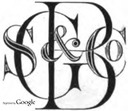
Bruce's New-York Type-Foundry
1813-1901. George Bruce & Son. George Bruce's Son & Co. Philadelphia. New York. Acquired Starr's Type Foundry ca. 1817. Late company name (after 1890): "V. B. Munson, successor to George Bruce's Son." Acquired by ATF in 1901. Plant disassembeld and moved to ATF's Jersey City plant in 1906.

[UK] Richard Watts, William Mavor Watts
Richard Watts (by 1815 to at least 1844). Succeeded by his son William Mavor Watts (to at least 1864). {Reed 363} Oriental and exotic faces descended to Gilbert & Rivington and then to Clowes & Sons (both publishers, not typefounders). Moseley, James, Justin Howes, and Nigel Roche. Founder's London A-Z. (London: The [European] Friends of the St. Bride's Printing Library, 1998.) , p. 31}
I do not know if there is any connection with Ullmer & Watts (established 1825).

Austin (Sharwood; Imperial Letter Foundry; Austin Letter Foundry)
1815 - 1872. Started in 1815 by Richard Austin (d. 1824), late a punchcutter for Simeon & Charles Stephenson, British Letter Foundry and freelance punchcutter with work for William Miller and Alexander Wilson. From 1824 by his son George Austin as Austin & Sons or the Imperial Letter Foundry. At the death of George Austin (by 1839) purchased by R. M. Wood, who took into partnership Samuel & Thomas Sharwood; trading as the Austin Letter Foundry. R. M. Wood died 1845; then just S. & T. Sharwood (still Austin Letter Foundry). Auctioned in chancery 1856 at the death of both Sharwoods. Two of R. M. Wood's four sons, J. Wood and R. [M.?] Wood purchased the foundry at auction (though Reed says the contents were "dispersed"). They continued, still styling the foundry the Austin Letter Foundry, until they sold out to Figgins in 1872.
This Austin Letter Foundry should not be confused with the Austin Letter Foundry started in 1862, from unrelated materials, by R. M. Wood's other two sons, Austin Wood and Rowland Wood .

[UK] Pouchée (and Jennings)
ca. 1810 - 1830. Louis John Pouchée. Partner with Jennings, at least 1810-1823. English licensee of the Didot patent for the "Polymatype" caster. Sold at auction (equipment deliberately destroyed by the Typefounders' Association). (Reed 361-362) { Moseley et. al., Founder's London A-Z , pp. 23, 30, 32}

[German Empire, Weimar Republic] Benjamin Krebs
1816 - ? Frankfurt a. Main. Acquired van der Heyden in 1912. Henning Krause (user "berlintypes") on flikr has a photograph of the 1916 specimen book of this foundry. See also the pinmark for this foundry.

Reich, Starr & Co.
1817-1820. Philadelphia Note: no continuity of materials with the former Starr's Type Foundry, which has been sold to D. & G. Bruce. John M. Reich and Richard Starr. Reich "a distinguished die-sinker". Closed circa 1820. Richard Starr moved from Philadelphia to Pittsburgh where he rejoined his brother Edwin Starr (who left the Boston Type Foundry for this) and about 1823 continued the business as Edwin & Richard Starr for a very short time. { Annenberg, 216, 114}

[FR] Molé le Jeune
Fl. 181? Google Books has digitized by not yet release (as of 2011) a six page specimen dated "181?" from this firm. Materials to Tarbé (later Fonderie Générale). [ref: Updike. Printing Types. v. 2, p. 184]
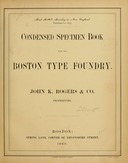
Boston Type Foundry
1817-1892. Boston. Formed from the sale in 1817 of the Charlestown branch of White's Type Foundry to Timothy Bedlington (a bookbinder) and Charles Ewer (a bookseller). Hired Eward Haskell (plant manager) and Edward Pelouze, Sewell Phelps, Michael Dalton, and Edwin Starr (all became independent typefounders in the future). Edwin Starr left in 1923 to form Edwin & Richard Starr (and then went on in 1824 to the New England Type Foundry), but was back at the Boston Type Foundry in 1826 (Annenberg 115). He may have left in 1827 (to partner with Stephen Sturdevant on a typecaster), but certainly had left by 1832 when he went to the Baltimore Type Foundry). Also employed James Conner, who left in 1827 to form his own stereotyping plant (which added typefounding in 1829 and became a major firm).
In 1851 sold to John K. Rogers, David Watson, and Edward Pelouze, Sr. The firm's name became (somewhat curiously) "John K. Rogers, Agent" (Annenberg, p. 73) or "John K. Rogers & Co." (Annenberg p. 212), and the foundry's name "The Boston Type Foundry."
1888. Purchased by James A. St. John and Carl Schraubstadter, Sr of the Central Type Foundry.
Sold for cash into American Type Founders at its creation in 1892. { Annenberg, 70-77}

J. Taylor
by 1817 to at least 1829. London. Moseley, James, Justin Howes, and Nigel Roche. Founder's London A-Z. (London: The [European] Friends of the St. Bride's Printing Library, 1998.) , pp. 10, 25.

Cincinnati Type Foundry
1817 - 1892. Cincinnati. Merged into American Type Founders at its creation in 1892.

[FR] Laurent
1818-1823 Jean François Laurent. 1923-1824 Laurent & Duguet. 1924-1827 Jean François Laurent. Merged into Laurent, Balzac & Barbier.

[The Pelouze Family]
fl. ca. 1818ff. Not a specific foundry, but a family with several members in typefounding and complex interests. This is just an index.
Dr. Edmund Pelouze (1765-1846); not a typefounder
Edmund Pelouze, Jr. (1797-); son of Dr. Edmund Pelouze; not a typefounder
Edward Pelouze, Sr. (1799-1876); son of Dr. Edmund Pelouze) {Annenberg 210-212}
Sophia Pelouze (1802-); married Michael Dalton (later a partner of Sewell Phelps in Phelps, Dalton & Co. (The Dickinson Type Foundry)
Edward Dalton Pelouze (Edward Pelouze Jr.) (1824-); son of Edward Pelouze Sr.
William Starr Pelouze (1828-); son of Edward Pelouze Sr.
Henry Lafayette Pelouze (1831-); son of Edward Pelouze Sr.
Frank H. Pelouze; son of Henry Lafayette Pelouze
Edward Craig Pelouze (1870-?); son of Henry Lafayette Pelouze

[George] Lothian Type Foundry [1st iteration]
1819 for about a year. Pittsburgh. George Buxton Lothian, son of Robert Lothian. With the assistance of Peter Cortelyou. After the quick failure of this foundry, Robert Lothian and the materials of the foundry went to D. & G. Bruce. Cortelyou apparently remained in Pittsburgh, because he is next seen in the Pittsburgh foundry of Edwin & Richard Starr. { Annenberg, 177}

[UK] Stephenson, Blake & Co.
1819 - ?. Originally Blake, Gannett &. Co., Acquired William Caslon [IV], Jr. foundry (formerly Jackson's). Stephenson, Blake was by its termination circa 1996 the last remaining British typefoundry. Its materials were acquired by The Type Museum.
See also the revived firm Stephenson, Blake & Co. (2000).

A. W. Kinsley (Franklin Letter Foundry)
1825-1831. Albany, New York. Probably unrelated to to the Albany Type Foundry of Starr & VanBenthuysen. Unrelated to the Albany Type Foundry [later Knickerbocker Type Foundry of Miller (later Gilchrist). Not sure of its relationship (if any; probably none) to the Franklin Type Foundry of Allison & Smith (1856-1892) .
Annenberg has some conflicting information about this foundry. In his discussion of it (p. 172) he notes that Richard Starr (1) came to Albany, (2) sold to A. W. Kinsley some of the matrices from Edwin & Richard Starr ("The Pittsburgh Fiasco"; but see it for notes on the conflicting stories of the several possible destinations of that foundry's materials), and then (3) went into partnership to start the Albany Type Foundry with Obadiah vanBenthuysen (not Kinsley). Kinsley formed his own foundry, A. W. Kinsley & Co. doing business as the Franklin Letter Foundry. Annenberg goes on to say that on Kinsley's death in 1832 this foundry was purchased by Elihu White and Nathan Lyman. Perhaps significantly, he says that they cooperated with Richard Starr's Albany Type Foundry (then Starr & Little). In 1835 Lyman bought out White and moved the foundry to become the Buffalo Type Foundry. So far so good.
But in Annenberg's discussion of Nathan Lyman (p. 88), he says that in 1829 Lyman left White's Type Foundry and went to Albany, where he remained until 1835 "either as the owner of the Franklin Type Foundry or as a partner with Starr." Annenberg observes that "No clear records exist of this period of [Lyman's] life, and it may be assumed that there was some type of cooperation between the two men. Certainly, Albany was not large enough for two competing foundries."
In either case, Lyman seems to have wrapped up the Franklin Type Foundry in 1835 and moved to establish the Buffalo Type Foundry. To add to the confusion, Lyman's former employer and partner, Elihu White, had previously (1817) established a branch in Buffalo. I've seen no evidence that it was related.

[UK] S. Heaphy
fl. 1821-1823. Reed (364) lists him as "Heaphy." { Moseley et. al., Founder's London A-Z , pp. 21} lists him as "S. Heafy", but note that the typeface used employs an 'f' which is perilously close to a long 's' in shape in the italic (you have too look closely, and the crossbar drops out of digital versions easily).

Lothian & Pell [2nd George Lothian foundry]
1822-1823. NY. The second typefoundry of George B. Lothian, founded after a stint at D. & G. Bruce and before that his first typefoundry. Pell was an investor. After a quick failure, Lothian's "interests" (says Annenberg; does this mean materials?) purchased by William Hagar. Lothian's next typefoundr began in 1829. { Annenberg, 122, 178}

[German Empire] Wagner & Schmidt
fl. 1902. Relation to Wagner unknown.

[UK] Pavyer
1822 or 1823 - 1904 Moseley, Howes & Roche record Benjamin Pavyer in Bartholomew Close from 1823-47, 1855, 1872-1876 (p. 12). Note that the first date conflicts with King & Pavyer, above. They record Benjamin Pavyer & Son in Farringdon Road in 1880 (p. 19) and in Saffron Hill in 1885-1896 (p. 29). They record the same firm in Hatton Garden in 1900 (p. 22). Merged with Bullen in 1904 to form Pavyer & Bullens Ltd..
Moseley, James, Justin Howes, and Nigel Roche. Founder's London A-Z. (London: The [European] Friends of the St. Bride's Printing Library, 1998.) [TO DO: Pavyer link to St. Louis and the introduction of Bruce pivotal casters into the UK]

[UK] James Dugard, William Thomas Dugard
by 1823 (James Dugard) to at least 1846 (William Thomas Dugard). { Moseley et. al., Founder's London A-Z , p. 20, 26}

[UK] King & Pavyer
1823? - 1825 This appears to have been a very brief partnership. They occupied premises in Featherstone Street, London (1823-1825). Both partners seem to have reappeared one year later (1826) with separate firms: Thomas King and Pavyer. King apparently kept the Featherstone Street location. The only reference I have so far is a brief note in: Moseley, James, Justin Howes, and Nigel Roche. Founder's London A-Z. (London: The [European] Friends of the St. Bride's Printing Library, 1998.) , pp. 20.

Edwin & Richard Starr
1823-1824? Pittsburgh. Annenberg calls it "The Pittsburgh Fiasco." From the business point of view, certainly it seems to have been. But one could also see it as a sort of an explosion which distributed foundry materials and knowledgable typefounders all over the map of early American typefounding. It was formed out of the former Reich, [Richard] Starr & Co. foundry (Philadelphia, closed 1820). Richard Starr (partner in that foundry) together with his brother Edwin Starr (who left the Boston Type Foundry for this) Presumably they had the materials from Reich, Starr & Co. The Edwin & Richard Starr foundry did not last long; it may have closed as early as 1824. { Annenberg, 114-115, 117, 203, 216, 235}. The foundry is notable for the varied accounts of the distribution of its materials. These are sometimes contradictory, so perhaps it's just best to list them all and await further research.
1. (Riggs, then Connor) David Bruce, in his 1874 History of Typefounding in the United States. (James Eckman, ed. NY: The Typophiles, 1981.) says "The 'Pittsburgh' punches matrices and other tools were purchased by Mr. Charles Starr brother to Richard, & brought back to N. Y. city. In turn these 'Pittsburgh' materials were purchased by Mr. Abraham Riggs, who after manufacturing from them a few years, they were purchased [sic] by Mr. J. C. Stonewall for the benefit of Mr James Conner, and formed the nucleus of the now extensive foundry of 'James Conners, Sons' 1839." (43-44)"
2. (Conner, Milwaukee) Annenberg, in recounting the history of the Starr family says "The Pittsburgh matrices and other tools were purchased by Charles Starr, brought to New York, and were used in 1829 to build up the new foundry of James Conner. It is believed that all the rest of the plant was sold to J. A. Noonan, a paper merchant of Milwaukee in the early sixties, and moved to that city to eventually become a part of the Northwestern Type Foundery, later Benton, Waldo & Co." (p. 114)
3. (Kinsley, then Buffalo) In his discussion of A. W. Kinsley & Co. (Albany), Annenberg (p. 172) says "Richard Starr came to Albany [NY] bringing with him some of the mats that had been salvaged from the Pittsburgh fiasco. Before going into partnership about 1825 with Obadiah BanBenthuysen and establishing a type foundry [Albany Type Foundry] he sold these mats to Mr. Kinsley.
While discussing the Conner foundry, Annenberg says "He [Conner] was fortunate in procuring some of the machines and mats of the defunct Albany [presumably Starr & VanBenthuysen] and Pittsburgh type founding plants of the Starr brothers." (p. 117)
However, in his discussion of A. W. Kinsley & Co. Annenberg says "Upon the death of Mr. Kinsley in 1832 the executor closed the plant. Elihu White and Nathan Lyman bought all the tools and mats and attempted to keep the plant in operation, and [sic] cooperating with Richard Starr, who was then managing the Starr & Little foundry [Starr & VanBenthuysen; Albany Type Foundry] . However, in 1835, Mr. Lyman purchased Mr. White's share, packe all the equipment and moved to Buffalo, establishing the Buffalo Type Foundry." (p. 172)
4. (New England) Bruce, History of Typefounding in the United States , in his discussion of the foundry of Messrs "Baker & Greely" [New England Type Foundry, Baker & Greele] says that "it was started under the management of Edwin Starr from drives from the Starr Pittsburgh enterprize [sic]." (p. 38)
The Starrs employed Peter Cortelyou as an apprentice. He had previously been with the [George] Lothian Type Foundry [1st iteration] (which had also been in Pittsburgh). He may have gone on after the demise of Edwin & Richard Starr to work briefly again with Lothian (between Lothian & Pell [2nd iteration] and the Lothian Type Foundry [3rd iteration], but soon ended up at Bruce's New York Type Foundry. Later, he started Cortelyou's Type Foundry.
Edwin Starr went on to a series of more or less brief engagements, starting next with the New England Type Foundry. Richard Starr went to Albany and formed Starr & VanBenthuysen (Albany Type Foundry).

Starr & VanBenthuysen (Albany Type Foundry; Starr & Little)
1824- Albany, NY. Richard Starr (late of Edwin & Richard Starr ("The Pittsburgh Fiasco") and Obadiah VanBenthuysen. Van Benthuysen sold his share two years later to Lemuel Little; firm name changed to Starr & Little. Unrelated to the Albany Type Foundry [later Knickerbocker Type Foundry of Miller (later Gilchrist). Unrelated to the Albany-based Franklin Letter Foundry of A. W. Kinsley. { Annenberg, 114}

[UK] Hugh Hughes
ca. 1824 - ca. 1841. Sold at auction; music punches and matrices went to C. Hancock (Reed 363-364)

New England Type Foundry
1824 - 1885. Founded as Baker & Greele, with Edwin Starr as manager and matrices from the " Starr Pittsburgh operation." Materials briefly to Golding & Co. but then to the Boston Type Foundry and thence to Kansas City Type Foundry.

[FR] Mallett-Heldoorn
1825 - before 1864. Paris. Succeeded by A.-M. Mallet fils ainé by 1864. In a bibliographic entry in the Bibliographie de la France (Year 87, Second Series, No. 42 (1898-10-15): 190.) for an 1864 specimen from A.-M. Mallet fils ainé, the date of the founding of the Fonderie de Mallet-Heldoorn is given as 1825. De Vinne, in The Practice of Typography: A Treatise on Title Pages (NY: The Century Company, 1902): 179, ascribes (and illustrates) the invention of capitals with rounded endings (on those extremities not normally bearing serifs) to Mallet-Heldoorn. Both he and the Bibliographie de la France give A.-M. Mallet fils ainé as the successor.

Ullmer
[1825?] If (and it is a big assumption) we assume that all of the references to "Ullmer" in { Moseley, James, Justin Howes, and Nigel Roche. Founder's London A-Z. (London: The [European] Friends of the St. Bride's Printing Library, 1998.) } refer to a family firm with some continuity, then we have: 1825 as Ullmer & Watts, "established 1825" { Founder's London A-Z, p. 24}, 1851 as Frederick Ullmer & Sons { Founder's London A-Z, p. 10}, 1872 as Frederick Ullmer { Founder's London A-Z, p. 25}, and 1896 as William Ullmer & Son { Founder's London A-Z, p. 21}. The first reference, to Ullmer & Watts, suggests a relationship with Richard Watts."
Also (not dated) "Frederick Ullmer" { Founder's London A-Z, p. 18}

[UK] Thomas King
1826 - 1850? Emerged from King & Pavyer. Occupied premises in Featherstone Street, London until 1833 (Mosely, Howe and Roche, p. 20). Premises in Hoxton Square, London 1835-1850 (same source, p. 230.
Is there a link from Thomas King to John Huffam King and the founding of what soon became the Patent Type Foundry (Shanks)?
The only reference I have so far is a brief note in: Moseley, James, Justin Howes, and Nigel Roche. Founder's London A-Z. (London: The [European] Friends of the St. Bride's Printing Library, 1998.) , p. 20.

[FR] Lion
Fl. 1827. Several 19th century library acquisition lists, digitized by Google Books, list Épreuves de caractères de la fonderie de J. B. Lion (Paris, 1827). Merged into Lion et Laboulaye Freres

[FR] Laurent & De Berny
1827-1828 Jean François Laurent, Honoré de Balzac & André Barbier. 1828 Laurent & Balzac. 1828-1840 Laurent & Alexandre de Berny. Formed out of Gillé, Laurent, and Duplat. Acquired Durouchail (1836). Succeeded in 1840 by Deberny.
Their Ornamented No. 1071 may have been the basis for Bruce's New York Type Foundry's Ornamented No. 851, which in turn was copied by Weidemann in the Twentieth Century and was commonly known as Tuscan Outline.

[UK] William Howard
by 1827 - 1864. Punchcutter and typefounder. "an ex-sailor possibly related to Louis John Pouchée. Cut and cast the Caxton and Basle types circa 1850 for The Chiswick Press (punches and matrices now at St. Bride's Library, via the Chiswick Press). "Typefoundry" [the blog of James Mosley] , especially "Recasting Caslon Old Face" (2009-01) and "The Materials of Typefounding" (2006-01) { Moseley et. al., Founder's London A-Z , p. 23, 28}

Conner (United States Type Foundry)
1827 (as a stereotyping plant) - 1829 - 1892. New York. James Conner (d. 1861). Started a stereotype plant in 1827. In 1829 obtained the services of Edwin Starr (who most recently had been at the Edwin & Richard Starr foundry) to start the foundry side of his own business. Conner may have purchased the materials of the Edwin & Richard Starr foundry from their brother Charles Starr. James Conner died in 1861; firm renamed James Conner's Sons.
Amalgamated with American Type Founders at its creation in 1892.

[US] Darius Wells (Wood Type)
1828-1839. The origins of the wood type industry in America. Darius Wells began cutting wood type (by hand) in 1828, and later developed a "lateral router" (not yet pantographically controlled) for making wood type. Succeeded by Well & Webb in 1839; Webb is presumed to have brought with him the pantograph engraving machine developed by Leavenworth when Leavenworth's firm dissolved. David Bruce, Jr. may have assisted in this (see {Kelly}, p. 43) .
Note: In 1864, after Darius Wells had quit the type business, his son Heber Wells purchased the business of his successors, by that time E. R. Webb.

[FR] Thorey & Virey
fl. 1828-1843. Paris. The Capron et Turlot foundry claimed to have been the successor of "Virey Frères."

Lothian Type Foundry [3rd George Lothian foundry]
1829-1842. [location unknown to me (NY?)] The third typefoundry of George B. Lothian Previously (1823) he had run Lothian & Pell). This foundry actually worked. Annenberg is a little unclear on its termination. In his discussion of George Lothian (pp 177-178) he gives the terminal date as 1842, but says that Lothian entered into a partnership with William Hagar in 1840 which lasted only six months. In his discussion of Hagar, he says that the Hagar and Lothian partnership lasted from 1840 to 1842. This was George Lothian's last foundry; he died in 1851. { Annenberg, 177-178}

Abraham Riggs
1829 - after 1853. New York. May have purchased the materials of the Edwin & Richard Starr foundry from their brother Charles Starr (as Annenberg says on p. 235). (Or Charles Starr may have sold them to James Conner (as Annenberg says on p. 114). For a year
American Type Founders at its creation in 1892.
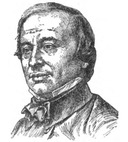
[FR] Lion et Laboulaye Freres; Biesta Laboulaye
1830s? - fl. 1851 - ? Not yet sure if this was (a) originally Laboulaye Freres which then merged with Lion to form Lion et Laboulaye Freres, or (b) the Laboulaye brothers joining J. B. Lion to form this firm. Probably succeeded by Biesta, Laboulaye and through Biesta came to run the Fonderie Générale.

[UK] Blunt
by 1832 to at least 1880. Charles Blunt (d. 1847), Mrs. Charles Blunt, Alfred Blunt. { Moseley et. al., Founder's London A-Z , p. 26}

[US] William Leavenworth (Wood Type)
Ca. 1834 - 1839. The first firm to manufacture wood type by pantograph in the US. Begun around 1834. Failed around 1839. Its manager, Ebenezer Russell Webb, became a partner in Wells & Webb in 1839, presumably taking this pantograph technology with him. David Bruce, Jr. may have assisted in this (see {Kelly}, p. 43) .
The slightly later (1836) pantograph engraving machine for wood type by Edwin Allen is presumed (by {Kelly}) to be unrelated.

Lyman & Son (Buffalo Type Foundry)
1835-1892. Buffalo, NY. Merged into American Type Founders at its creation in 1892.

[FR] Tarbé (Fonderie Générale); Biesta?
Fl. 1835ff. Fonderie de E. Tarbé. Succeeded Molé le Jeune. This firm later (owned? / operated? / was? ) the Fonderie Générale, having absorbed also [Ambrose] Fermin Didot, Crosnier, and Éverat. I think, but am not yet certain, that it had an association with Biesta before becoming Biesta, Laboulaye (still with the foundry name "Fonderie Générale.")

[FR] Fonderie Générale
Fl. 1830s - 1840s; - 1912. Paris. This seems to have been a foundry name for several related firms. See Tarbé (at which point the foundry had amalgamated Molé le Jeune, [Ambrose] Fermin Didot, Crosnier, and Éverat). Then see Biesta Laboulaye. Then see Adolpe René et. Cie (who appear to have succeeded this line of foundries, but who may or may not have used the name "Fonderie Générale.") The Fonderie Digney claimed descent ("ex-prote") from " maison Rignoux, Jules Didot et de la Fonderie Générale."
The " History of Deberny et Peignot [http://amgweb.rit.edu/dphist1.htm]" at the Cary Graphic Arts Collection of the Rochester Institute of Technology library's website devoted to the 20th century magazine Arts et Métiers Graphiques: http://amgweb.rit.edu/index.htm says that in 1912 Georges Peignot ( Fonderie G[ustave] Peignot et fils) purchased the punches (no mention is made of other materials, or of the business itself) of the Fonderie Générale.

[FR] Poirier de Saint Charles
fl. 1835. Paris. A bibliographic citation in the Bibliographie de la France (Year 87, Second Series, No. 42 (1898-10-15): 191) identifies a (much earlier) specimen provisionally dated to 1835: "Gravure et fonderie de caractères par procédés mécaniques" by "Poirier de Saint-Charles et Cie., ingénieurs-mécaniciens."
The machanical emphasis is interesting as "POIRRIER DE, St. Charles Philippe" (but reported in [Newton's] The London Journal of Arts (Vol. XXVII, Conjoined series) as "Philippe Poirier de Saint Charles, of Norfolk-street, Strand") was granted British patent No. 10,745 of July 1, 1845 for cold-forming type.

[FR] Olive
1836-[1978/1979?] Marseilles. Roger Excoffon (mid 20th c.) Matrices to Haas.

[US] Edwin Allen (Wood Type)
1836-[shortly after 1852]. Wood type. While Loy says that Edwin Allen was the first to apply the pantograph to the making of wood type, later research indicates that his 1836 pantographic engraving machine for wood type was anticipated by William Leavenworth's 1834 machine. Allen's business was succeeded by J. G. Cooley.

[Frankfurt, ..., FRG; ES] Bauer
1837-1972. Bauersche Schriftgiesserei. Free city of Frankfort am Main in the German Confederation; thence to West Germany. In 1972 absorbed by "former subsidiary" Neufville.

[Frankfurt am Main] Andreäischen
fl. 1838. Schriftgiesserey der Andreäischen Buchhandlung. Free city of Frankfurt am Main in the German Confederation. Extracts from a specimen of 1838 ( Probe-Blätter aus der schriftgiesserey der Andreäischen Buchhandlung) as excerpted contemporaneously in the Journal für buchdruckerkunst, Scriftgießerei und die verwandten Fächer (Braunschweig [Brunswick], Duchy of Brunswick: Johann Heinrich Meyer) are presented in de Jong, vol. 1, p. 108.

[UK] John Binny
1839-1841. John Binny, son of Archibald Binny (1762/1763 - 1838), started a foundry of his own soon after the death of his father. Short-lived. "... he and his plant disappear from typographic history." { Annenberg, 68}

Dickinson Type Foundery [sic] (Phelps, Dalton)
1839-1892. Boston. Merged into American Type Founders at its creation in 1892.

[US] Wells & Webb (Wood Type)
1839 - 1854. Succeeded Darius Wells when Ebenezer Russell Webb joined as a partner upon the dissolution of the Leavenworth firm. Wells is presumed by {Kelly} to have brought with him the technology of Leavenworth's 1834 pantographic engraving machine for wood type. David Bruce, Jr. may have assisted in this (see {Kelly}, p. 43) .
Wells sold his interest to Webb in 1854, and left the type business in 1856. Succeeded, therefore, in 1854 by E. R. Webb.
Their Doric Ornamented may have been the basis for Bruce's New York Type Foundry's Ornamented No. 847, which in turn was copied by Weidemann in the Twentieth Century and was commonly known as Tuscan Ombree. The 1854 Doric Ornamented was copied later in the Twentieth Century by Adobe as the digital Zebrawood [TM].

[Grand Duchy of Hesse, German Empire] J. M. Huch
1840 - 1888. Offenbach am Main. Reorganized as Aktiengesellschaft für Schriftgießerei und Maschinenbau. One 21th century website spells it "Huck."

[FR] Pinard
fl. 1840. Paris. Google Books has digitized but not yet (2011) released Quelques caractères de la fonderie pinard (1840).
Illustrated in Bécus.

[UK] Bullen
1840-1904. Nicollete Gray gives the start of this foundry as 1840; its successor was still in operation when she wrote XIXth Century Ornamented Types and Title Pages. (London: Faber & Faber Ltd., 1938). Founder's London A-Z mentions "Bullen" as a recipient of some of the materials of the London Branch of Alexander Wilson's Glasgow Type Foundry, circa 1845 (pp. 21, 23). Same source notes George Bullen & Co. in Cromer Street, London from 1885-1939 (1904-1939 as Pavyers & Bullen). So Bullens must have merged with Benjamin Pavyer & Son in 1904 to become Pavyers & Bullens.

St. Louis Type Foundry
1840 - 1892. St. Louis. Merged into American Type Founders at its creation in 1892.

[UK] Hancock
by 1841 - ? In 1841 acquired the music punches and matrices of Hugh Hughes. (Reed 363-364)

Pelouze & Co. (Philadelphia Type Foundry)
1841-1892. Philadelphia. Merged into American Type Founders at its creation in 1892.

[FR] Darmoise
Fl. 1842 (?) - 1860. Fonderie typographique de Émile Darmoise Succeeded by Ferrouil, and then Saintignon. (Darmoise is mentioned, with a founding date which probably reads 1842 (the scan is poor) in a bibliographic entry for a Saintignon specimen book in the Bibliographie de la France (Year 87, Second Series, No. 42 (1898-10-15): 190.)) Google Books has digitized, but not yet (2011) released, Spécemin des caractères de la fonderie typographique de Émile Darmoise (1860).

[FR] Leclerc
1842-186? (1868?) 1842-1858 Pierre Leclerc. René Leclerc (?) 1858-186? Widow of (Pierre?) Leclerc. Merged with Bliaux to form Leclerc and Bliaux fils.

[FR] Derriey
By 1842 - 1880. Paris. Sold in 1880 to Turlot [Luc Devroye] (but would this be Turlot or Capron et Turlot?) Google has digitized but not yet released (2011) three specimens from 1842 and 1862, all entitled " Gravure et fonderie de C. Derriey: spécimen album." The Bibliographie de la France (Year 87, Second Series, No. 42 (1898-10-15): 190) lists Vignettes, caractères, traits de plume, filets en lame, cadrets cintrés, etc., par Charles Derriey, typographe ." (1847)

[FR] Bliaux
1844-1867 Bliaux. 1867-1868 Bliaux fils. Merged with Leclerc to form Maisons Vve Leclerc & V. Bliaux fils réunies.

[FR] Fonderie propagande de Petibon
Fl. 1830 - 1867? Paris. Succeeded by " Longien, type-founders, Paris, D.A.Poupart (et frère Madrid)" (1830).
I do not know if there is any relation between this foundry and the Fonderie sociale de V. Petibon fils.
American Machine Typefounding Begins (1840s)
(Bruce's pivotal caster first used in the Boston Type Foundry, see above)

E. Starr & Son
1845-1853. Philadelphia, PA. "This pin mark [illustrated] is all that remains of the Starr Foundry. ... This foundry became in 1853 the Collins & M'Leester Foundry." { Lasko, "Pinmarks...", pp. 10, 14}.

Hagar Type Foundry
1845-1887. New York, NY. Equipment acquired by "three New York foundries" { Lasko, "Pinmarks...", p. 10}.

[FR] Deberny
1840-1881. Alexandre Deberny [formerly De Berny]. Fonderie Deberny & Cie. Paris. Successor of Laurent & De Berny. Charles Tuleu (Deberny's illegitimate son) joins in 1877, inherits the firm in 1881. Succeeded in 1881, therefore, by Tuleu.

[US] Curtis
Holmes & Curtis (1847 - 1852). E. A. Curtis (1852 - ca. 1863). Curtis & Mitchell (1864 - 1880). [Various names and owners, 1880-1900). Boston. Not a part of the original 1892 ATF amalgamation; not sold to ATF. Materials "dispersed around 1900" (Annenberg, pp. 152-153).

[Saxe-Weimar-Eisenach] Herman Toepfer
Before 1850. Typefounder in the Grand Dutchy of Saxe-Weimar-Eisenach (now part of Thuringia, in Germany). Moved to the US in 1850 and started a Typefoundry in New York." { Annenberg, 56}

[FR] Marcellin-Legrand
Fl. 1850. Fonderie de Marcellin-Legrand et Cie. Google Books has digitized but not yet (2011) released a specimen from 1850 from this firm. In the Bibliographie de la France (Year 87, Second Series, No. 42 (1898-10-15): 190) the title of an undated specimen from " Capron et Turlot claims to incorporate Marcellin-Legrand.

Herman Toepfer, in NY
fl. 1850. Previously in Germany." Moved first to NY, and soon after to Chicago. He and his two sons, Herman Toepfer Jr. and Charles Toepfer joined very briefly with the Chicago branch of White's Type Foundry (which went on to become Marder, Luse & Co. after they left). They left and started the Great Western Type Foundry (which became Barnhart Brothers & Spindler). { Annenberg, 56}

[UK] Marr
1850 - ? Successors to the Edinburgh and Dublin branches of Alexander Wilson (q.v.)
Gray (II): 303 (copy of Bruce's Ornamented No. 1515, which was known in the 20th century as Belgian).

[US] J. G. Cooley
1850s? Norwich, CT. Wood type. to be the first to apply the pantograph to the making of wood type. Succeeded Edwin Allen. Employed William H. Page from 1855 to 1856. { Loy, p. 86} {Kelly}, p. 44, says that in 1869 Page purchased "Cooley & Dauchy."

[FR] Plon Frères
Fl. 1851. La fonderie nouvelle de Plon frères. Paris. In a bibliographic entry in the Bibliographie de la France (Year 87, Second Series, No. 42 (1898-10-15): 190) for an 1854 specimen from this firm, the title of the specimen claims that they are "successeurs de Jules Didot." Google Books has digitized but not yet (2011) released two specimens from this foundry, both dated 1851. The Google bibliographic information for them identifies the Plon brothers as Hippolyte, Charles, and Henri-Philippe.

[UK] Harrison and Son
Fl. 1851. N.B., not yet verified as typefounders.

[FR] Roussel
Fl. 1851. Moveable types for music. N.B., not yet verified as typefounders.

[Saxony] Schelter
Fl. 1851. Dresden, Kingdom of Saxony. Possibly succeeded by Schelter & Giesecke.
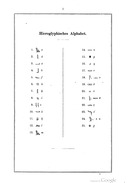
[Prussia, German Empire] Theinhardt
1849- 1908. Berlin. Hieroglyphic and Cuneiform ("Assyrian") types. Acquired by Berthold

[FR] Laplace
Fl. 1850-1860. Google Books has digitized but not yet (2011) released: Épreuves des caractères de la fonderie bordelaise (Bordeaux, FR: A Laplace & Cie., 1850), Épreuves des caractères de la fonderie A. Laplace & Cie. (1860), and Épreuves des caractères de la fonderie bordelaise (Bordeaux, FR: A Laplace & Cie., 1860).

[FR] Doublet
1850-1878 E. H. Doublet. 1878-1908 Charles Doublet. 1908-1910 Doublet et Cie. 1910-1915 M. Doublet. "Characters" acquired by Gustave Peignot (but what of other materials and the business?)

Albany Type Foundry [Miller]; Knickerbocker Type Foundry
1851 - ca. 1861. Unrelated to the Albany-based Franklin Letter Foundry of A. W. Kinsley. Unrelated to the Albany Type Foundry of Starr & VanBenthuysen. { Annenberg, 172}

[NL] Typefoundry Amsterdam
1851-1984 [1988?]. Amdsterdam. Lettergieterij Amsterdam, Tetterode Nederland. Many faces imported into the US in the 20th century by Amsterdam Continental Types, Inc., and distributed by them and by various US typefoundries (including Typefounders of Chicago). Materices and materials acquired in 1984 by Neufville (which was Bauer).

Lindsay Type Foundry
1852-1903. New York. Originally Robert & John Lindsay (1852 - ca. 1856). Robert & John & Alexander W. Lindsay (ca. 1856 - [by 1870]) By 1870 Alexander W. Lindsay left this firm to form his own, A. W. Lindsay Type Foundry. The (original) Lindsay Type Foundry continued under that name, and later as Robert Lindsay & Co. It was not a part of the original 1982 American Type Founders amalgamation, but was purchased by ATF "around 1903" (see Annenberg, pp. 174-176).

Collins & M'Leester
1853-1892. Philadelphia. Evolved out of E. Starr & Son.. Merged into American Type Founders at its creation in 1892.

[UK] Oxford University Press, Foundry Revived
1853 - 1987 (Foundry). Matrix making: ca. 1864-1909 in Stereotype dept. ca. 1909-1953 outsourced. 1953-1980s in foundry. Oxford.

[US] E. R. Webb (Wood Type)
1854-1864. Succeeded Wells & Webb when Webb bought out Wells. Succeeded by Vanderburgh, Wells & Co. when Darius Wells' son Heber Wells and partners purchased the firm from Webb's estate.
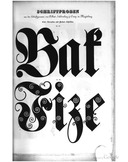
[Prussia] Falckenberg
Fl. 1854. Berlin. (Sometimes spelled Falkenberg in US sources.)

John Ryan Type Foundry
1854-1892. Baltimore, MD. John E. Hanrahan, its head type designer, went on in 1899 to develop the Compositype sorts caster. Merged into American Type Founders at its creation in 1892.

[UK] Patent Type Foundry (Shanks)
1855 - [through 1950s] - ? London. Started 1855 by John Huffam King (is there a link back from him to Thomas King?) Sold 1857, renamed Patent Type-Founding Company. May have used the Johnson automatic typecasting machine Purchased 1873 by p. M. Shanks and H. A. Revell. As P.M. Shanks & Co. from 1881. Later P.M. Shanks and Sons, Ltd. Merged in 1933 with R. H. Stevens Ltd [the Figgins foundry] to form Stevens, Shanks.

Ph. Heinrich
1855-1892. New York. Acquired (or at least his materials acquired) by Manhattan Type Foundry, but merged into American Type Founders at its creation in 1892 under the name "P. H. Heinrich."

[FR] Aubanel
Fl. 1855. Laurent Aubanel. Google Books has digitized but not yet (2011) released one specimen from this foundry, dated 1855.

[US] Page
1856-? Wood type. First at South Windham, CT (1856) and then Greeneville, CT (1857). Acquired materials of H. & J. Bill. Sold to Hamilton.

[Frankfurt am Main] Dresler
? - 1859. Free city of Frankfurt am Main in the German Confederation. Acquired by Flinsch

C. G. Sheffield, Chicago
May have cast the first type commercially in Chicago in 1855. Operated under his own name only very briefly before becoming the Chicago Type Foundry (the Chicago agency of White, which later became Marder, Luse). See Marder, Luse, below, for further discussion.

Marder, Luse (Chicago Type Foundry)
1855 - 1892. Chicago. Began as a branch of Elihu White's Type Foundry. John Marder (former bookkeeper of the foundry) purchased in 1963 using his father-in-law David Scofield's money; D. Scofield & Co. In 1867 joined briefly by Herman Toepfer Jr. and Charles Toepfer (who had been casting with their father, Hermann F. Toepfer) to form Scofield, Marder, Toepfer & Co. The Toepfers left soon to found the Great Western Type Foundry (which didn't last long, but became Barnhart Brothers & Spindler). A.P. Luse joins (and Collins leaves) in 1867; firm now Marder, Luse & Co. trading as The Chicago Type Foundry. Merged into American Type Founders at its creation in 1892.
The Chicago Type Foundry of Marder, Luse & Co. was presumably entirely separate from the Chicago Type Foundry which was selling Elrod rule (at least) circa (presumed) 1930s.
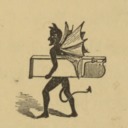
Allison & Smith (Franklin Type Foundry)
1856 - 1892. Cincinnati. Originally a branch of Johnson & Co.. Merged into American Type Founders at its creation in 1892.

Northwestern Type Foundry [before Benton]
1856 - 1873. Milwaukee. Started by Edward Miller, who had just sold his Albany Type Foundry (to A. S. Gilchrist, who renamed it the Knickerbocker Type Foundry). Miller purchased a complete foundry plant from James Conner, intending to set up in Chicago. He set up in Milwaukee instead. Sold in 1861 to Sias and Hill (not typefounders). Sold again in 1863 to J. A Noonan. Noonan was not a typefounder, but may have purchased some of the materials from the foundry of Edwin & Richard Starr ("The Pittsburgh Fiasco") via their brother, Charles Starr. North-Western Type Foundry [Benton]

Walker/Pelouze/Bresnan Type Foundry
1856-1895. New York. Before 1856, S. R Walker had a plant manufacturing "leads, slugs, rules, and dashes." Formed parnership in 1856 with Henry Lafayette Pelouze to start the Walker & Pelouze foundry. In 1856 they started a branch in Richmond, VA, which became the Richmond Type Foundry; Pelouze generally went with the Richmond foundry, in complex (Civil) wartime circumstances. Various owners of (NY) Walker & Pelouze foundry, including a temporary takeover by the Tweed racketeering ring, until the formation of Walker & [P.H.] Bresnan in 1882. Continued as P.H.Bresnan from 1890. Dissolved in 1895 without joining ATF. (BUT, conflicting: See notice in The Inland Printer. Vol. 15, No. 4 (July, 1895): 414. There it says firm of Walker & Bresnan dissolving upon Walker's retirement, continuing as Bresnan.) { Annenberg, 78-79} Machinery sold, but no indication in Annenberg as to where it went.

[FR] Adolphe René et Cie.
Fl. 1858. Succeeded Biesta, Laboulaye (Fonderie Générale). A bibliographic citation for Épreuves de caractères de la fonderie Adolphe René et Cie, successors de Firmin Didot, Molé, Lion, Tarbé, Crosnier, Évarat, Pasteur, Biesta, Laboulaye . (Paris: Adrien Le Clère, 1858). appears in Premier supplément au catalogue méthodique des livres imprimé de la bibliothèque publique de la ville de Boulogne-sur-mer (Bologne-sur-Mer, France: C. Le Roy, 1865) p. 233 (digitized by Google Books). It is not clear from this information whether or not the Fonderie Adolphe René was still using the name " Fonderie Générale.")
Google Books has digitized but not yet (2011) released a specimen from 1860.
Illustrated in Bécus.

[Frankfort, etc.] Schriftgiesserei Flinsch
1859 - 1916. Free city of Frankfort am Main in the German Confederation; then Kingdom of Prussia; then German Empire. Heinrich Friedrich Gottlob Flinsch acquired Dresler in 1859. Name Schriftgeisserei Flinsch used from 1868. St. Petersburg (Russia) branch sold to Berthold in 1912. Acquired by Bauer in 1916. Henning Krause (user "berlintypes") on flikr has a photograph of a ca. 1889 specimen books from the Flinsch foundry (which has most of the information repeated here). He also has a photograph of an 1899 specimen.

[FR] Rignoux
[dates?] In the Bibliographie de la France (Year 87, Second Series, No. 42 (1898-10-15): 190) the title of an undated specimen from the " Fonderie Digney claims descent ("ex-prote") for them (Digney) from "maison Rignoux, Jules Didot et de la Fonderie Générale."

[FR] Digney
Fl. 1860. Saint-Germain-en-Laye. Google Books has digitized, but not yet (2011) released Épreuves de caractères de la fonderie de P. Digney (1860). Succeeded by Warnery, who continued to operate as the "Fonderie Typographique Digney."
In the Bibliographie de la France (Year 87, Second Series, No. 42 (1898-10-15): 190) the title of an undated specimen from the Fonderie Digney claims descent ("ex-prote") for them from " maison Rignoux, Jules Didot et de la Fonderie Générale."
Illustrated in Bécus.

Farmer, Little & Co.; A.D. Farmer
1861-1909. New York. A.D. Farmer from 1892. Emerged out of Elihu White's foundry circa 1861. Acquired by ATF in 1909.

[UK] George Williamson
? - 1862 or 1864. Sold to Austin Wood and Rowland Wood, who continued it and at some point began trading as the Austin Letter Foundry (not to be confused with the Austin Letter Foundry run until 1872 by two other Wood brothers, J. and R. [M.?] Wood). { Gray, Nicolette. XIXth Century Ornamented Types and Title Pages. London: Faber and Faber Limited, 1938. , p. 110} and { Moseley et. al., Founder's London A-Z , p. 23}

Austin Letter Foundry (Wood)
1862 - at least 1916. Austin Wood and Rowland Wood (sons of R. M. Wood, late a partner in the Austin Letter Foundry) purchased the foundry of George Williamson in 1862. At some point they began trading under the name "Austin Letter Foundry."
This Austin Letter Foundry should not be confused with the Austin Letter Foundry started in 1815 by Richard Austin and run from 1856 to 1872 by two other sons of R. M. Wood, J. Wood and R. [M.?] Wood.

[UK] Frederick Tarrant (punchcutter)
fl. 1862-1883. Trained Edward Philip Prince (who cut the Doves types). See Avis, F. C. Edward Philip Prince: Type Punchcutter. London: For the Author, 1967.

[FR] A.-M. Mallet Fils Ainé
By 1864 - before 1883. Fonderie A.-M. Mallet fils ainé. Preceeded by Mallet-Heldoorn. Succeeded by A. Langlois-Mallet.
In a bibliographic entry in the Bibliographie de la France (Year 87, Second Series, No. 42 (1898-10-15): 190.) for an 1864 specimen from this foundry, it is said to be the successor of the Fonderie de Mallet-Heldoorn. De Vinne, in The Practice of Typography: A Treatise on Title Pages (NY: The Century Company, 1902): 179, confirms this.
[German Empire, Weimar Republic] Woellmer
1854 (as printers), 1864 - 1938. Berlin. Wilhelm Woellmer's Schriftgiesserei und Messinglinienfabrik [brass rule factory]. Henning Krause (user "berlintypes") on flikr has photographs of the circa 1896, the 1926, and the 1926 specimens of this foundry.
The Wikipedia [EN] article for Woellmer indicates that Wilhelm Wöllmer first worked at the Haenel foundry. This article also gives terminal dates of 1854/1864 to 1938.

[US] Vanderburgh, Webb & Co. (Wood Type)
1864-1989. Succeeded E. R. Webb when Darius Wells' son Heber Wells and partners bought the firm from E.R.Wells' estate. Sold in 1898 to Hamilton.

[FR] Paul Longien
(1830?), 1867-1889. Paris. Succeeded Fonderie propagande de Petibon. Succeeded by Gustave Peignot.

[FR] Battenberg
fl. 1867. Paris.
J. Marcassin, in Essai Typographique (Paris: by the author, 1900) cites Battenberg as having introduced electroformed matrices ("matrices en galvano") to France (p. 7, Google Books PDF 23). Illustrated in Bécus.
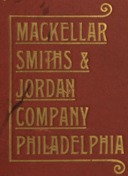
MacKellar, Smiths & Jordan
1867 - 1892. Previously Johnson & Co.. Merged into American Type Founders at its creation in 1892.

[FR] Maisons Vve Leclerc & V. Bliaux fils réunies
1868. Successor to Leclerc and to Bliaux. Succeeded by Vve Routier & Peignot; Gustave Peignot.

[FR] Peignot
1868-1875 Vve [widow] Routier and Gustave Peignot. 1875-1889 Gustave Peignot. 1889-1916 Gustave Peignot et fils. 1916-1923 Peignot et Cie. Successor to Leclerc and Bliaux fils. Merged with Girard (successor to Deberny) to form Deberny et Peignot.
Acquired Longien. Acquired Cochard & David. Acquired punches of the Fonderie Générale. Acquired "characters" of Doublet. Acquired Baskerville punches from Bertrand.

[UK] Charles Morton (City Type Foundry)
by 1869 to at least 1931. { Moseley et. al., Founder's London A-Z , pp. 15, 20}

A. W. Lindsay Type Foundry
By 1870 - 1892. New York. Established by 1870 by Alexander W. Lindsay after he left his brothers' firm, the Lindsay Type Foundry. The A. W. Lindsay Type Foundry was a part of the original 1892 American Type Founders amalgamation (see Annenberg, pp. 174-176).

[UK] Charles Hammond
by 1870 to at least 1889. Had worked with Figgins. Not sure if he set up in London after leaving that firm. Moved to Sheffield 1870. Returned to London 1874. { Moseley et. al., Founder's London A-Z , pp. 19, 23}

[FR] Lespinasse
fl. 1872. Paris. Fonderie Typographique de Lespinasse. Henning Krause (user "berlintypes") on flikr has a photograph of the 1872 specimen book of this foundry. Presumably succeeded by Lespinasse Fils.

[IT] Favele
fl. 1872. Carlo Favele e Comp. Turin. Henning Krause (user "berlintypes") on flikr has a photograph of the 1872 specimen of this foundry.

[UK] Thomas Pepper & Son
by 1872 to at least 1939. { Moseley et. al., Founder's London A-Z , pp. 21, 23}

[UK] Gyles
London. Circa 1864 - at least 1956. Probably multiple firms. At times one of them was DBA the "Anglo-American Type Foundry."

Central Type Foundry
1870/2 - 1892. St. Louis. James A. St. John and Carl Schraubstadter, Sr. Founded as a branch of the Boston Type Foundry and then bought out by Schraubstadter and St. John. In 1888 they purchased control of the Boston Type Foundry (but did not consolidate the two). Annenberg writes of the amalgamation of ATF that "... the Central Type Foundry of St. Louis and the Boston Type Foundry were the only two foundries purchased for cash." (p. 73)
Engaged in early machine engraving of matrices, with non-Benton equipment (ca. 1882).

Illinois Type Founding Co.
1872 - 1892. Chicago. Cited in Lasko, "Pinmarks...", p. 10. Mentioned in the Business Directory section of The Inland Printer Vol. 7, No. 6 (September, 1890): 1077. Reorganized into the Standard Typefoundry (see a Trade Note in Inland Printer, Vol 13, No. 2 (May 1894): 160).

H. C. Hansen Type Foundry
1872 - ca. 1922. Boston. Dissolved. (Note: Not acquired by American Type Founders.)

Kansas City Type Foundry
1872 - 1892. Kansas City. Merged into American Type Founders at its creation in 1892.

[US] Louis Schauppner & Co.
At present only attested (to my knowledge) by brief claims that they existed. It is not yet certain that they cast type; Schauppner was associated both with type foundries and printing supply houses throughout his career. The claim that the business in which Schauppner later had an ownership interest, the Western Printer's Supply Company, intended to cast type suggests that at very least he had aspirations to do so.
Louis Schauppner was earlier affiliated with the Conner Type Foundry and the Illinois Type Foundry and later with the National Type Foundry (Chicago), American Type Founders (Chicago Branch), the Inland Type Foundry, Bruce Type Foundry, and the Western Printer's Supply Company, which may or may not have engaged in typefounding.

Barnhart Brothers & Spindler
1873-1911/1929. Founded as the Great Western Type Foundry. Bought by ATF in 1911, but operated until 1929.

North-Western Type Foundry [Benton et. al.]
1873-1892 Milwaukee. In 1873 the Northwestern Type Foundry was purchsed from J. A. Noonan by Linn Boyd Benton and Edward Cramer. Cramer retired in a year and in 1874 Frank M. Gove took his place. {Cost}, p. 37 indicates that Benton & Gove changed the name to "The North-Western Type Foundry." Gove died 1882; replaced by Robert VanValkenburgh Waldo. Merged into American Type Founders at its creation in 1892.

Pacific Type Foundry
1874-1884. A branch of Marder, Luse. Sold to Palmer & Rey in 1884. Not to be confused with the Pacific States Type Foundry or the later Pacific Typesetting and Type Foundry Co.
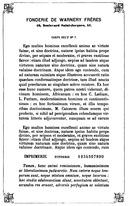
[FR] Fonderie Warnery & Cie; Warnery Frères
Fl. 1875 - 1892. Fonderie Warnery & Cie.; Warnery Frères; Successors to Digney; they continued to operate as the "Fonderie Typographique Digney," at least for a while.

[FR] Dupont
Fl. 1875. Fonderie Paul Dupont. Google Books has digitized but not yet (2011) released a specimen, Fonderie des caractères: premier spécimen (1875) by this foundry. Illustrated in Bécus.

[FR] Colson
? - 1875. (An undated specimen from Capron et Turlot in a bibliographic entry in the Bibliographie de la France (Year 87, Second Series, No. 42 (1898-10-15): 190) claims Colson as one of several predecessor foundries.) (The Encyclopédie chronologique des arts graphiques by Réné Billoux (1943) [seen in snippet view via Google Books] says that the Fonderie Colson was incorporated into "la fonderie Turlot" in 1875.)
A bibliographic entry in Bibliographie de la France (Year 87, Second Series, No. 42 (1898-10-15): 190-191) for a specimen from Turlot claims " Dumiel-Colson as a predecessor firm.
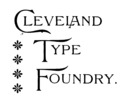
H. H. Thorp (Cleveland Type Foundry)
1875 - 1892. Cleveland Merged into American Type Founders at its creation in 1892.
In the mid 1870s, the five major British typefounding firms re-formed the Association of Typefounders ( which had first been formed in the 18th century ).
At this time the Association comprised three members of the original cartel: Caslon, Stephenson, Blake (which had absorbed the original Association member William Caslon III), and Figgins. It also included two new member: Sir Charles Reed & Son (Fann Street Foundry) (which had absorbed the original Association member Fry) and Miller & Richards of Scotland. { Millington, Roy. Stephenson Blake: The Last of the Old English Typefounders. New Castle, DE and London: Oak Knoll Books and The British Library, 2002. p. 73}
The (British) Association of Typefounders was unrelated to the American organization of that same name and purpose.

[FR] Capron et Turlot
Fl. 1878. Paris. The products of this firm are mentioned in the Gazette hebdomadaire de médecine et de chirurgie, No. 28 (1878-07-12) (Paris: Masson et Cie., 1878): 450. An undated specimen from the firm of Capron et Turlot is mentioned in a bibliographic entry in the Bibliographie de la France (Year 87, Second Series, No. 42 (1898-10-15): 190.) In it, they claim to be successors to Virey Frères [Thorey et Virey?], Marcellin-Legrand, Dumiel, and Colson.) Presumably Capron et Turlot was succeeded by Turlot.
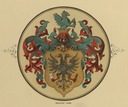
Palmer & Rey
1878/1882 - 1892. San Francisco. Merged into American Type Founders at its creation in 1892.

[US] Hamilton
1880-? Wood type. Two Rivers, WI. Acquired William H. Page.

[FR] Tuleu
1881-1914 Charles Tuleu. 1914-1921 Tuleu & [Robert] Girard. Successor of Deberny. Succeeded briefly by Girard (then Deberny & Peignot).

J. G. Mengel Co. ("Monumental")
1881-1892. Baltimore, MD. "The Monumental Type Foundry." { Lasko, "Pinmarks...", p. 12. (Unrelated to Bob Magill's Monumental Press & Typefoundry.) Merged into American Type Founders at its creation in 1892.

[FR] (Imprimerie Bécus)
fl. 1882. Not a typefoundry, but a printing house. However, their specimen of 1882 identifies many of the foundries which supplied their types and is useful as several of these foundries are not well represented. Typefoundries shown include: Battenberg, Digney, Dupont, Mayeur, Pinard, René, and Virey. There are also references to Elzévier, but surely this must be the name of a face, not the 17th century typefounding operations of the Elzévirs.

[FR] Langlois-Mallet
By 1883 - ? Fonderie A.-M. Mallet fils ainé, A. Langlois-Mallet, successeur. Preceeded by A.-M Mallet fils ainé.
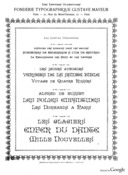
[FR] Mayeur
fl. 1882 - 1919. Paris. Gustave Mayeur. Google Books has digitized but not yet (2011) released specimens from 1904 and 1919.
Illustrated in Bécus.

[FR] H. Lespinasse Fils
fl. 1879-1882. Paris. Presumably preceded by Lespinasse. Apparently succeeded by Lespinasse & Ollière.
However Luc Devroye's web page on 19th century typefoundries cites an un-named specimen from 1879 and asserts that "Lespinasse et Cie." was acquired that year by Bertrand & Fils.

[FR] Lespinasse & Ollière
fl. 1890s. Paris. Presumably successors of H. Lespinasse Fils. Succeeded by Ollière & Ecorcheville (see an 1896 advertisement by that foundry to this effect).

[FR] Ollière
fl. 1890s. Paris. Maurice Ollière et Cie. There is a puzzle here. Google Books has digitized, but not yet released (2011) an extract of a specimen by "Maurice Ollière et Cie., typefounders". Simplistically, one would assume that this firm was a predecessor of Lespinasse & Ollière. However, the date of this extract is 1901, which postdates the 1896 ad of Ollière & Ecorcheville to the effect that they are successors of Lespinasse & Ollière.

[FR] Bertrand
fl. 190? Paris. A. Bertrand & ses fils. Google Books has digitized but not yet (2011) released two specimens from this foundry, one dated "190?" and the other dated "19??"
Acquired Lespinasse et Cie. ( Luc Devroye's web page on 19th century typefoundries cites an un-named 1879 specimen of Lespinasse et Cie. and asserts that that foundry was acquired in that year by Bertrand & Fils.
Possessed "Baskerville" punches which were sold in the 1914-1916 period to Gustave Peignot & fils. (See " History of Deberny et Peignot [http://amgweb.rit.edu/dphist1.htm]" at the Cary Graphic Arts Collection of the Rochester Institute of Technology library's website devoted to the 20th century magazine Arts et Métiers Graphiques: http://amgweb.rit.edu/index.htm.)

[FR] Cochard & David
1868-18?? Cochard and A. David. 18??-1888 A. David. 1888-1892 Widow of A. David. Paris. Acquired by Gustave Peignot.

[UK] Edward Philip Prince (punchcutter)
1883 (first freelance) - 1923. Apprenticed to Frederick Tarrant in 1862. Worked with Tarrant and cut at least Tudor Black for Miller & Richards. Began freelance work in 1883 and became about as famous as a punchcutter can be. Cut the Doves types. Died 1923. See Avis, F. C. Edward Philip Prince: Type Punchcutter. London: For the Author, 1967.

[FR] Réjus
Fl. 1884. Paris. Google Books has digitized but not yet (2011) released Petit spécimen des caractères de la fonderie Réjus & Cie. (1884). (An undated specimen mentioned in a bibliographic entry in the Bibliographie de la France (Year 87, Second Series, No. 42 (1898-10-15): 190) is probably the same.)

[UK] William Wilson; Wilson & Co.
fl. 1885 (William Wilson). fl. 1893 (Wilson & Co.) It isn't yet clear to me if these two are the same firm. { Moseley et. al., Founder's London A-Z , pp. 23, 24}

Manhattan Type Foundry
1886-1890 NY, NY. Acquired Heinrich (or at least his materials). "For a foundry with a short life, it had an incredible number of pin marks." { Lasko, "Pinmarks...", p. 11} "In 1892 the plant was dismantled and sold to ATF. { Lasko}

[German Empire, Weimar Republic] Aktiengesellschaft für Schriftgießerei und Maschinenbau
1888 - 1922. Offenbach am Main. See also the pinmark for this foundry.

[German Empire, Austria-Hungary] Schriftgiesserei Julius Klinkhardt
fl. 1888-1906. Leipzig and Vienna. Henning Krause (user "berlintypes") on flikr has photographs of specimen books from this foundry from circa 1888 to 1906.

[German Empire, Weimar Republic] Schelter & Giesecke
fl. 1888-1932. Leipzig. Henning Krause (user "berlintypes") on flikr has photographs of specimen books from this foundry from 1888 to 1932.

Pacific States Type Foundry
1888-1906. San Francisco. (also Hawks & Shattuck) (also A.E. & W.F. Shattuck) See Inland Printer, Vol. 13, No. 6 (March, 1894): 508 for trade note describing succession of Hawks & Shattuck on retirement of Hawks; Shattuck incorporated as Pacific States Typefoundry. Burned in 1906 and not reestablished. Published specimen of Gracilis in The Inland Printer. Vol. 17, No. 1 (April, 1896): 77. Their types for sale by Barnhart Brothers & Spindler, Crescent, Standard, Inland, H. C. Hansen, and Keystone. Also v. 17 n. 3 p. 318, "Sierra." Also v 22 n 3 1898-12 p. 381, "Pacific Victoria Italic." N.B., not to be confused with the Pacific Type Foundry, a branch of Marder, Luse which, confusingly, was also started by Hawks. Also not to be confused with the later Pacific Typesetting and Type Foundry Co.
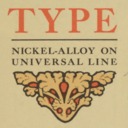
Keystone Type Foundry
1888-1917. Philadelphia. Acquired by American Type Founders.

[UK] Wicks Rotary Type-Casting Co.
ca. 1888-1904. This company was primarily a manufacturer of typecasting equipment, and as such I cover them (to the small extent I can) in the Wicks Rotary Type-Caster section of "Foundry Automatic" Typecasters set of Notebooks. The firm employed Lucien Alphonse Legros. They "expended effort on improving the Benton-Waldo pantographic punchcutting machine" and engraved punches for punching their own matrices for their rotary typecaster. In "financial limbo" 1904-1906; then became Blackfriars Type Foundry Ltd. (See { Wallis, L. W. "Legros and Grant: The Typographical Connection." Journal of the Printing Historical Society. No. 28 (1999): 5-39. })

[UK] DeLittle [wood type]
1888 - [at least 1988] Ref: Bolton, Claire. DeLittle 1888-1988: The First Years in a Century of Wood Type Manufacture, 1888-1895 . (Kennington, Oxford: The Alembic Press, 1988).

Schroeder & Werner
1888/1889-1891. St. Louis. Commercial matrix engravers. Gustave F. Schroeder and Nicholas J. Werner were previously at the Central Type Foundry. After their partnership, Schroeder continued as an independent matrix engraver. Werner continued first as an independent matrix engraver and then for the Inland Type Foundry.

[FR] Fonderie sociale de V. Petibon fils
Fl. 1889. Paris. Google Books has digitized but not (2011) released a volume entitled Fonderie de Petibon, à Paris (1889). A bibliographic entry in the Bibliographie de la France (Year 87, Second Series, No. 42 (1898-10-15): 190) lists a specimen for the "Fonderie sociale de V. Petibon fils."
I do not know if there is any relation between this foundry and the Fonderie propagande de Petibon.

[FR] Saintignon
Fl. 1883-1889. Paris. Fonderie typographique A. Saintignon. Successors to Darmoise (via Ferrouil?)

[US] Minneapolis Electro Matrix Co.
fl. 1889. Presumably commercial matrix makers, electroforming from patrices. At present I know of them from one reference only, a photograph of a page of the "Day Book" of Benton, Waldo & Co. reprinted in Theo Rehak's Practical Typecasting (New Castle, DE: Oak Knoll Books, 1993) . This indicates that on May 1, 1889 the Minneapolis Electro Matrix Co., of Minneapolis, MN leased the Benton-Waldo Punch Engraving Machine No. 4 for a sum of $4900.00 and that on June 28, 1889 they leased Punch Engraving Machine No. 6 for $2,000.00. Machine No. 6 was sent, for reasons not explained, to the Ames Manufacturing Co. of Chicopee, MA. Patricia A. Cost, in The Bentons: How an American Father and Son Changed the Printing Industry . (Rochester, NY: RIT Cary Graphic Arts Press, 2011.) indicates that in a circa 1891 advertising pamphlet of Benton, Waldo & Co. one machine was said to be in use with an Electro Matrix Engraving Co. of New York. (p. 68). The relationship between the Minneapolis and New York firms, if any, is not known (at this time, to me, at least).

[US] John Graham
fl. 1889. 451 Belden Ave. Chicago, IL. Published a specimen page ("New Type Ornaments and Borders") in The Inland Printer. Vol. 7, No. 4 (January, 1890): 348. Mentioned in the Business Directory section of The Inland Printer Vol. 7, No. 6 (September, 1890): 1077. Ditto Vol. 12, No. 1 (Oct. 1893): 15.

Gustave F. Schroeder
1891-? Mill Valley, California. Independent commercial matrix engraver. See also the biographical Notebook for Gustave F. Schroeder Successor to the partnership of Schroeder & Werner.

Nicholas J. Werner
1891 - ca. 1895. St. Louis, MO. Independent commercial matrix engraver. See also the biographical Notebook for Nicholas J. Werner Successor to the partnership of Schroeder & Werner. Later went to Inland Type Foundry.

Hooper, Wilson & Co.
[unknown]-1892. Baltimore, MD. Merged into American Type Founders at its creation in 1892.

[UK] Wood, Miles
ca. 1892 - ? London. Originally both typefounders and engineers of typefounding machinery. In 1910 the engineering business was split off and may have become the engineering works for Grant, Legros & Co. Ltd. { Wallis, L. W. "Legros and Grant: The Typographical Connection." Journal of the Printing Historical Society. No. 28 (1999): 5-39. } and { Moseley et. al., Founder's London A-Z , p. 26}

[German Empire] van der Heyden
fl. 1895. Offenbach a. Main. Merged with Krebs in 1912. Henning Krause (user "berlintypes") on flikr has a photograph of the 1895 specimen book of this foundry.

[UK] Haddon (Caxton Type Foundry)
[by 1895] - 1939? London. Walter Haddon John Haddon & Co. Disposition unknown to me.

[CA] Toronto Type Foundry
By 1890 through at least 1967/1968. Toronto, Montreal, Winnipeg, Regina. Selling agents for American Type Founders Company.
In 1892, 23 American typefoundries amalgamated into one company, American Type Founders.
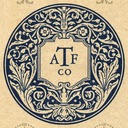
American Type Founders
1892-1993. Created from the merger of 23 foundries. Destroyed by its owners in 1993.
ATF later purchased some foundries which continued, for a time, under their own names ( Inland, Keystone). In a much smaller way, ATF also cast type for other parties under their trade names ( Steve L. Watt's "Kittypot Castings").

Empire Type Foundry
1893-1970. Delevan, NY. Claude & Wilbur Persons.

Independent Type Foundry
By 1893. In the N. J. Werner's article "Wiebking Created Popular Faces in Chicago, Friend Discloses." The Inland Printer. Vol. 90, No. 2 (November 1932): 71-73, he says that Robert Wiebking set up his own business "in 1893, having made connections with the Crescent Type Foundry and the Independent Type Foundry." (71)
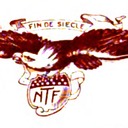
[US] National Type Foundry (Chicago)
By 1894 - 1895. Chicago. Materials acquired by the Crescent Type Foundry (Chicago)
Distinct from the National Type Foundry (Bridgeport (CT), 1920s), National Type Foundry (Pittsburgh (PA), 1930s), National Type Company (Jackson (MI), 1930s), and the National Type Founders (Akron (OH), 1940s-1950s).

[US] Standard Type Foundry
fl. 1895. Chicago. A reorganization of the Illinois Typefounding Company (see a Trade Note in Inland Printer, Vol 13, No. 2 (May 1894): 160). Also listed in the Business Directory of The Inland Printer, Vol. 13, No. 3 (June 1894): 281. Their "Standard Old Style" mentioned in "Recent Type Designs" column in The Inland Printer, Vol. 13, No. 4 (July 1894): 366. Their "Clipper Extended Improved" mentioned in "Recent Type Designs" column in The Inland Printer, Vol. 13, No. 6 (Sept. 1894): 559. Published a specimen in The Inland Printer. Vol. 14, No. 5 (Feburary, 1895): 477 [Google PDF p. 503]; address listed as 200-2002 Clark Street, Chicago. Cited in "Recent Type Designs" in The Inland Printer: Vol. 14, No. 5 (February, 1895): (Clipper); Vol. 14, No. 6 (March, 1895): 574 [Google PDF p. 584] (various borders).

Crescent Type Foundry
1895-1900. Chicago. Cited in Lasko, "Pinmarks...", p. 8. Published specimen (of Iroquois and various borders) in The Inland Printer. Vol. 15, No. 5 (August, 1895): [insert following p. 504]. Also a note concerning Iroquois and Yost (a typewriter face) in "Recent Type Designs." Vol. 15, No. 6 (September, 1895): 622. Also Morris Old Style, Vol. 17, No. 1 (April, 1896): 78. Also v. 17 n. 3 p. 319, "Elzevir."

[UK] St. Bride's Printing Library
1895 - present. Not a typefoundry, but a repository of a significant quantity of typefounding materials. These include: the library of Talbot Baines Reed (of the Cottrell / Fann Street Foundry), and the materials of Stevens, Shanks (successors to Figgins [R.H.Stevens] and Shanks [Patent Type Foundry]).

[Indian Empire] Rajnagar Type Foundry
ca. 1895 - 1980. State of Gujarat, India (probably in Ahmedabad). Also "Rajnagarwala" and "Rajnagar Type Foundrywala." The "oldest type foundry of Gujarat named Rajnagar that has served you for over Eighty five years" {Rajratan Type Foundry. Introducing New Attractive English & Gujarati Type Faces. (1983)}; it is unclear whether the 85 year period dates from 1980 (date of the dissolution of the business) or 1983 (date of the specimen in which this statement is made). Partnership dissolved June 1980. "Immediately after that the majority of the parters has continued the same business under the new name of ' RAJRATAN TYPE FOUNDRY' {Ibid.}

Minnesota Type Foundry
fl. 1899. St. Paul, MN. Mentioned in the Business Directory section of The Inland Printer Vol. 7, No. 6 (September, 1890): 1077. There is a brief note in The Inland Printer. Vol. 22, No. 5 (Feb, 1899), p. 614, to the effect that the Minnesota Type Foundry submitted a calendar to The Inland Printer. In a Barnhart Brothers & Spindler ad in The Inland Printer, Vol. 15, No. 6 (Sept. 1895): 631. the Minnesota Type Foundry is listed as a distributor of BB&S type.

Schniedewend & Lee
Chicago. Mentioned in the Business Directory section of The Inland Printer Vol. 7, No. 6 (September, 1890): 1077 as "special western and northwestern agents for MacKellar, Smiths and Jordan.
When I haven't yet tracked down the dates for foundries, their position here is just a wild guess (or sometimes simply arbitrary).

[German Empire, ..., DE] D. Stempel
1895 - present. Currently active; see the List of Current Typefoundries.

[FR] Ollière & Ecorcheville
fl. 1896 - 1901. Paris. Successors of Lespinasse & Ollière.

[UK] British Type Foundry (Barker)
by 1896 to 1900 as the British Type Foundry. 1900 to at least 1908 as J. C. Barker. { Moseley et. al., Founder's London A-Z , p. 14} No relation to the British Letter Foundry of Simeon & Charles Stephenson (1789-1797).

Kelsey & Co.
1898-1920 [as a foundry]. Meriden, CT. Matrices from New England Type Foundry. Operated at times under the name "Connecticut Type Foundry."

[UK] London Central Type Foundry
fl. 1896-1900. { Moseley et. al., Founder's London A-Z , p. 20, 31}

[US] The Lanston Monotype Machine Company
Considered here as matrix manufacturers.
This Notebook contains only references for those matrices which were made exclusively for non-composing typecasting (i.e., just as display mats). For material on matrices for composition, and for material containing both composing and noncomposing matrices, see ../../ Composing Typecasters -> Monotype Composition Caster & Keyboard -> Matrix Data, Specimens, & Typography (US) and Matrix Data, Specimens, & Typography (UK).

[UK] The Monotype Corporation, Ltd.
Considered here as matrix manufacturers.
This Notebook contains only references for those matrices which were made exclusively for non-composing typecasting (i.e., just as display mats). For material on matrices for composition, and for material containing both composing and noncomposing matrices, see ../../ Composing Typecasters -> Monotype,

Wimble [Australia]
At present I know nothing about this significant Australian foundry. A pin mark is shown for it in the pin marks Notebook.

[IT] Commoretti
fl. 1897. G. Commoretti & Figlio. Milan. Henning Krause (user "berlintypes") on flikr has a photograph of the 1897 specimen of this foundry.

[FR] Renault et Robois
[dates?] Paris. Fonderie de Renault et Robois. (An undated, unnamed specimen from this foundry is mentioned in a bibliographic entry in the Bibliographie de la France (Year 87, Second Series, No. 42 (1898-10-15): 190.))

[FR] Eon
[dates?] Paris. J.-V Éon. (An undated specimen from this foundry is mentioned in a bibliographic entry in the Bibliographie de la France (Year 87, Second Series, No. 42 (1898-10-15): 190.))

[FR] Dumiel
[dates?] (An undated specimen from Capron et Turlot in a bibliographic entry in the Bibliographie de la France (Year 87, Second Series, No. 42 (1898-10-15): 190) claims Dumiel as one of several predecessor foundries.)
A bibliographic entry in Bibliographie de la France (Year 87, Second Series, No. 42 (1898-10-15): 190-191) for a specimen from Turlot claims "Dumiel- Colson as a predecessor firm.

Typewriter-Type Co.
fl. 1900. Boston. [see Inland Printer, vol. 25, No. 2 (May 1900): 268. Also vol. 24, No. 4 (Jan 1900): 612. printing type in imitation of typewriters.]

Wiebking, Hardinge & Co.
Informal partnership from 1894; formal partnership from 1896. Plant sold to Western Type Foundry in 1913. (See Advance Type Foundry for data) Chicago.
Robert Wiebking and Henry H. Hardinge. Not a typefoundry, but a commercial matrix engraving firm which also produced its own typecasting equipment. In 1913 they briefly operated Advance Type Foundry (q.v.)

Huffington / St. Louis Printers' Supply Co.
1904-1907. The St. Louis Printers' Supply Co. began in 1882 as "a selling branch of BB&S; last attested in 1915. From 1904-1907 "George Huffington listed a type foundry in the city [of St. Louis] directories" and, if he did actually manufacture type, they might have sold it. What little is known about this operation is in Robert A. Mullen's Recasting a Craft: St. Louis Typefounders Respond to Industrialization (Carbondale, IL: Southern Illinois University Press, 2005): 46-47 and note 22 on p. 175.

[US] Typewriter-Type Company
Fl. 1901. Boston.
Sold type with a "fabric" effect pattern cut into the printing surface. It is not yet clear whether they cast this type as sold or cut the pattern into types of other manufacturers. Mentioned, with illustration, in the "Business Notices" column of The Inland Printer, Vol. 26, No. 6 (March 1901): 987.

Western Type Foundry
1906-1918. Chicago and St. Louis. Founded in Chicago in 1901 as the Western Printers' Supply Company of Chicago. Merged in 1906 with the typefounders' machinery company [name?] of Charles Schokmiller and began typefounding operations. Ties to the matrix engraving of Wiebking, Hardinge & Co.; in 1913 they purchased both the Advance Type Foundry of Wiebking, Hardinge & Co. and the Chicago-based plant of Wiebking, Hardinge & Co. The Western Type Foundry was unrelated to the Great Western Type Foundry of Barnhart Brothers & Spindler, but, confusingly, was purchased in 1918 by Barnhart Brothers & Spindler.

[German Empire, Weimar Republic] Genzsch; Genzsch & Heyse
fl. 1902-1916 Munich, Hamburg. Henning Krause (user "berlintypes") on flikr has a photograph of the cover of a 1902 Schriftgießerei E. J. Genzsch (Munich) and of the 1915 and 1916 specimens of Genzsch & Heyse Schriftgiesserie A. G. (Hamburg).

Multigraph
1902-1982. Cleveland, Oh. 1902-1932 as American Multigraph. Merged in 1932 with Addressograph International to form Addressograph-Multigraph. Moved to LA in 1978; name changed to AM International in 1979; ceased business in 1982. Cast type for Multigraph relief printing (this is type on a short "T" body). [TO DO: scan catalogs]

Pavyers & Bullens Ltd.
1904-1939. London. Merger of Benjamin Pavyer & Son and George Bullen & Co. It isn't clear from this source whether the foundry terminated in 1939 or simply moved (the source is a gazetteer, not a history).

[UK] Blackfriars Type Foundry Ltd.
1904-1931 Evolved out of the Wicks Rotary Type-Casting Co. See { Wallis, L. W. "Legros and Grant: The Typographical Connection." Journal of the Printing Historical Society. No. 28 (1999): 19. }) Also Moseley, James, Justin Howes, and Nigel Roche. Founder's London A-Z. (London: The [European] Friends of the St. Bride's Printing Library, 1998.) (for the terminal date and the current disposition of the property (it is a restaurant).

[UK] William Henry Muggleton
by 1904 to at least 1908. { Moseley et. al., Founder's London A-Z , p. 12}

[German Empire] O. Weisert
fl. 1908. Stuttgart. Henning Krause (user "berlintypes") on flikr has a photograph of the cover of a 1908 specimen book. (It appears to show as emblems two types, two gravers, and a hand ladle.)

[IT] Urania
? - 1908. Milan. Merged with Nebiolo and operated from 1908 to 1916 as Société "Augusta". Henning Krause (user "berlintypes") on flikr has a photograph of the 1909 Augusta specimen (half of which is marked "Urania") and of a volume of their 1914 specimen.

[UK] John Black, then Alfred J. Pillar
by 1908 - to at least 1939 London. Moseley et. al. cite John Black in 1908, and then again at a different address from 1912-1919. "succeeded by Alfred J. Pillar, 1921-1939." { Moseley et. al., Founder's London A-Z , p. 22} Probably entirely unrelated to John Black, fl. 1825.

Missouri-Central Type Foundry
[TO DO: digitize specimens] 1909 - at least 1964. Marshall, MO (to 1914) Wichita, KS (1914 - at least 1964). A brief notice in the journal The Brass World and Platers' Guide. Vo. X, No. 9 (September, 1914) says: "The Missouri-Central Type Foundry, Marshall, Mo., will be located in Wichita, Kansas, after September 1st." (p. 388). (Google Books)
By their 1964-1965 catalog, advertising "practically all our type is now cast on Thompson casters, but ... we also have Giant, Elrod, Material Maker and Monotypes for strip material, base furniture, rules, leads and slugs." Sorts service and display lines. Manufacturers of, rebuilders of, and dealers in new and used machinery.
Materials to Castcraft; matrices thence, with othe Castcraft display matrices, to the late John Hern. Matrices now at Skyline Type Foundry.

[IT] Société "Augusta"
An operating name for Nebiolo from 1908 to 1916, after its acquisition of Urania. Henning Krause (user "berlintypes") on flikr has a photograph of the 1909 specimen of this foundry. Half of it is marked Nebiolo and half Urania.

Dearborn
by 1910 through at least 1945. Chicago, IL (not Dearborn, MI) Charles Nuessbaumer. Cast Victor Hammer's American Uncial.

[UK] Grant, Legros & Co.
1910-1919. Primarily makers of the Davis Typecaster and the Legros & Grant Rapid Typecaster, but also manufacturers of punches and matrices. Acquired by the Williams Engineering Co. Ltd.

[German Empire] Butter
fl. 1911. Dresden. Schriftgiesserei Brüder Butter. Henning Krause (user "berlintypes") on flikr has a photograph of the cover of a 1911 specimen book. It shows a most remarkable type cast with two jets, forming an arch through which a typefounder carring a very long ladle is striding. He also shows their much less interesting November 1913 specimen.
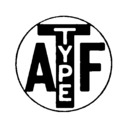
Advance Type Foundry
1912/1913-1914. Chicago. Operated by Wiebking, Hardinge & Co. (1900/1901 - 1914). Merged into Western Type Foundry in 1914.

[UK] George Friend
fl. 1912. Cut punches for Cranach Press (Count Harry Kessler). { Moseley et. al., Founder's London A-Z , p. 22}

[FR] Turlot; Henri Chaix
Fl. 1889 - 1914. Paris. Fonderie Turlot, Henri Chaix & Cie, Successeurs. Presumably preceeded by Capron et Turlot. Google Books has digitized but not released (2011) several specimens from the "Fonderie Turlot" and the "Fonderie Turlot, Henri Chaix & Cie., Successeurs." Henning Krause (user "berlintypes") on flikr has a photograph of the 1914 specimen book of this foundry.
A bibliographic entry in the Bibliographie de la France (Year 87, Second Series, No. 42 (1898-10-15): 190) cites an undated specimen from the "Fonderie Derriey-Turlot" which claims "Maisons réunies, C. Derriey, Virey frères [Thorey & Virey?], Marcellin-Legrand, Dumiel- Colson. Spécimen des filets. Extrait de Grand Catalogue Derriey. A. Turlot, successeur."

[IT] Fonderia Cisalpina
fl. 1914. Milan. Henning Krause (user "berlintypes") on flikr has a photograph of the cover of a specimen book of theirs, circa 1914.

[US] Manlius Type Foundry
fl. 1914. Syracuse, NY. Mentioned as casting Monotype faces in Monotype: A Journal of Composing Room Efficiency, Vol. 2, No. 3 (June 1914): [unpaginated].

[DE] Gottfried Böttger
fl. 1915. Paunsdorf (Leipzig). Henning Krause (user "berlintypes") on flikr has a photograph of the cover of a specimen book of theirs, circa 1915.

M & H
1915 - present. Originally Mackenzie & Harris. Now a division of Arion Press. Currently active; see the List of Current Typefoundries.

[US] The Monotype Type Setting and Foundry Co.
fl. 1917. St. Louis, MO. Mentioned as casting Monotype faces and issuing a specimen in Monotype: A Journal of Composing Room Efficiency, Vol. 5, No. 4 (Nov-Dec 1917): 86.

Superior Matrix Company
[probably 1921] - ?. Baltimore, MD. Some connection to the Carter Type Machine Company.

[US] Pacific Typesetting and Type Foundry
fl. 1920. Brief mention in Monotype: A Journal of Composing Room Efficiency, Vol. 8, No. 6 (Sept. 1914): 58. ("This plant is unique [among Monotype shops offering type for sale] in that the type foundry is distinctly separate from the typesetting business, and plans are being made to push the foundry end.")
Not to be confused with the earlier Pacific Type Foundry (1874-1884) or the Pacific States Type Foundry (q.v.).

[US] Laclede
1921-1923. St. Louis. (The French fur trader Pierre Laclède founded St. Louis in 1764.) The second and final type foundry of Charles Schokmiller. At least two faces cut by Robert Wiebking, including Munder Venezian. Purchased in 1918 by Barnhart Brothers & Spindler.
Ad in The Inland Printer, Vol. 71, No. 1 (April, 1923): 135.

[Switzerland, then Italy] Officina Bodoni
1922-1977. Giovanni Mardersteig. Punches cut by Charles Malin.

[FR] Girard et Cie
1921 - 1923. Successor to Tuleu (formerly Deberny) Merged with Peignot to become Deberny & Peignot.

[ES] Richard Gans
fl. 1922. Madrid, Barcelona. Henning Krause (user "berlintypes") on flikr has a photograph of the cover of a specimen book of theirs, circa 1922. He says that Gans was born in Germany and for the most part imported types into Spain.

[FR] Deberny-Peignot
1923 - 1972. The result of the merger of Girard et Cie (previously Deberny, previously Laurent & Deberny) and Peignot. Matrices to Haas

[FR] Ribadeau Dumas (?)
Fl. 1926. Ribadeau Dumas [individual] struck matrices for Perpetua (Dumas, Monotype UK) from punches cut by Charles Malin from designs by Eric Gill in 1926, and cast from them. These punches later went to The Monotype Corp. Ltd. (UK). (C. Volmer Nordlunde's Letters from a Danish Typographer [Typophiles Chap Books, No. 46] (NY: The Typophiles, 1967), p. 75.)

[CA] Shilvock-Parkes
by 1929 through at least 1940. Vancouver, BC, Canada. Trade typesetters and typefounders.

[UK] Riscatype (Yendall)
1870-1924 as printers. 1924-1984 as typecasters. Risca, South Wales and London. 1870-1878. Printing firm of John Taylor. 1878-1911. Printing firm of Thomas Yendell. 1911 Limited status. 1911-1924. Printing only. 1925-1935. Typecasting begins under name "Riscatype"; printing continues. 1935-1984. Typecasting only. See Benjamin Brundell's site http://britishletterpress.co.uk/type/type-founders.
{ Moseley et. al., Founder's London A-Z } give their London addresses for 1931 (p. 20), 1936-1939 (p. 28), and 1951-1980 (p. 28).
[UK] R. P. Bannerman and Son
? - 1934? London. Made electroformed matrices from 1909 to "about 1934" for the Oxford University Press. Also made pivotal casters for the OUP. May have made and sold their own sorts caster.

[Prussia, ... FRG?] Berthold
1858 - 20th century (in metal). Berlin. Hermann Berthold, AG. A US firm, Berthold Direct Corp., continues some of the Berthold designs in digital form. Metal type imported into the United States by Amsterdam Continental Types, Inc.. Substantial materials to Wagner.

[ES] Neufville
? - 2008 [end of typecasting]. Fundición Tipográfia Neufville. Origins? A "subsidiary of Bauer, which absorbed its parent company. After absorbing Bauer, acquired matrices of Typefoundry Amsterdam.

[CH] Haas
? - ? Acquired matrices from Deberny & Peignot, Berling, Olive, and "a small foundry from Denmark." Type imported into the United States by Amsterdam Continental Types, Inc..

[Weimar Republic, ... FRG] Ludwig & Mayer
By 1920s through 1960s. Type imported into the United States by Amsterdam Continental Types, Inc.. Acquired by Neufville.

[Weimar Republic, ... FRG] Wagner
1919 - 1972? Johannes and Ludwig Wagner, Willy Jahr. Originally NorddeutscheSchriftgeißerei, 1919. Relation to Wagner & Schmidt unknown. Moved to Ingolstadt 1949. Acquired part of materials of Weber.

[UK] Speedspools
? - present? Edinburgh. Harry MacIntosh. Monotype composition shop and foundry. Probably still active; I need to confirm this. Developed the MacTronic 2 system of computer input for Monotype hot metal. See http://www.theoldschoolpress.com/ppuk/speedspools.htm and http://www.letterpressalive.co.uk

[UK] Gloucester Typesetters
? - present? "For typesetting and founts." Possibly still active; I need to confirm this. See http://www.letterpressalive.co.uk

[IT] Società Nebiolo
1852 - 1978 [as a foundry] Giovanni Nebiolo acquired G. Narizzano foundry in 1852. Merged with Urania in 1908. From 1908 - 1916 operated as Société "Augusta" [n.b., this is the French version of its name then]. Renamed Società Nebiolo in 1916. In 1978 FIAT purchased the press manufacturing business (currently Nebiolo Printech S.p.A.), selling the typefoundry to Italiana Caratteri [n.b., this information from Wikipedia; I can't find "Italiana Caratteri" attested anywhere else so far]. Type imported into the United States by Amsterdam Continental Types, Inc.. Manufactured the Nebitype noncomposing linecaster. (Much of this information from Wikipedia; also some from the photograph by Henning Krause (user "berlintypes") on flikr of the 1909 Société "Augusta" specimen book. He also has a photograph of the 1920 Nebiolo specimen.)

[DE] C. E. Weber
? - ? Stuttgart. Type imported into the United States by Amsterdam Continental Types, Inc.. Materials to D. Stempel (Frankfurt) Wagner (Ingolstadt).

[UK] Adana
1922-1999 [as a press manufacturer, at least] Twickenham, UK. As "The Adana Agency," 1922-1940 and "Adana (Printing Machines) Limited," 1940-1987. The Wikipedia article on Adana notes that they cast type. I know nothing more than this right now. Acquired in 1987 by Caslon Limited.
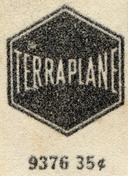
Sterling Type Foundry
1922 - 1930 by Ollie E. McLaughlin in Charlotte, MI. 1930-1982 by Frank Sassamon in Charlotte, MI. 1983-present by David C. Churchman and David W. Peat in Indianapolis, Indiana. It still sells type and occasionally has type cast for it. Nuernberger-Rettig / Universal Type Casters to Skyline Type Foundry in 2013-2014.

[US] National Type Foundry (Bridgeport, CT)
1920s. Bridgeport, CT.
Distinct from the National Type Foundry (Chicago, 1890s), National Type Company (Jackson (MI), 1930s), National Type Foundry (Pittsburgh (PA), 1930s), and the National Type Founders (Akron (OH), 1940s-1950s).

Atlantic Type Foundry
At present this is known only from a pin mark draw in Theo Rehak's Practical Typecasting (p. 196).
The relationship of this foundry to the Atlantic-Pacific Type Foundry (Omaha, Nebraska), if any, is unknown.

Atlantic-Pacific Type Foundry (Omaha, Nebraska)
At present this is known only from a single reference in Annenberg (p. 240).
The relationship of this foundry to the Atlantic Type Foundry, if any, is unknown.

Stephens (Boston)
A pinmark for this foundry is attested.
This foundry may or may not be Stephens' Printers Warehouse, Boston, MA, as cited in Annenberg, p. 241.

[US] Archie J. Little
Fl. 1931. Archie Little Typographers. Seattle, WA. Lanston Monotype matrix casting. May or may not have electroformed matrices as well. Some matrices to Fritz Klinke (via Charlie Broad and Morneau Typographers). Some matrices to Skyline (via John Hern).

[US] Bell Type and Rule Company
1932-present. Chicago. Currently active; see the List of Current Typefoundries.

[UK] Stevens, Shanks
1933 - [through 1950s] - ? Stevens, Shanks & Co. or Stevens Shanks & Sons Ltd. Formed from the 1933 merger of R. H. Stevens Ltd [the Figgins foundry] and P. M. Shanks & Sons Ltd [Patent Type Foundry]. On dissolution (after 1971) its materials went to the St. Bride's Printing Library

[US] National Type Company (Jackson, MI)
1930s. Jackson, Michigan. It isn't clear whether this company manufactured type or simply resold type.
There is no information at present as to whether or not there was any connection between the National Type Company and Andy Dunker, other than the fact that both were located in Jackson, Michigan at the same time.
Distinct from the National Type Foundry (Chicago, 1890s), National Type Foundry (Bridgeport (CT), 1920s), National Type Foundry (Pittsburgh (PA), 1930s), and the National Type Founders (Akron (OH), 1940s-1950s).

[US] National Type Foundry (Pittsburgh, PA)
1930s. Pittsburgh, PA
Distinct from the National Type Foundry (Chicago, 1890s), National Type Foundry (Bridgeport (CT), 1920s), National Type Company (Jackson (MI), 1930s), and the National Type Founders (Akron (OH), 1940s-1950s).

Neon
By the 1930s - 1959. Pittsburgh, PA. Acquired by Castcraft / Typefounders of Chicago in 1959.

[UK] Williams Engineering Co., Ltd.
by 1900? - 1950s London. { Moseley et. al., Founder's London A-Z , p. 28} attest a Gordon W. Williams in 1900. I'm only presuming that his firm became the Williams Engineering Co. Ltd. Made electroformed matrices from 1934 to "sometime around 1950" for the Oxford University Press. Also made pivotal casters for the OUP. Also made the Nodis Rapid Caster. In 1919 they acquired Grant, Legros & Co.

[BE] Van Loey-Nouri
fl. 1930. Bruxelles-Nord. Fonderie Typographique Van Loey-Nouri. All I know of this foundry is that Henning Krause (user "berlintypes") on flikr has a photograph of the cover of a specimen book of theirs, circa 1930.

American Wood Type Manufacturing Company
Wood type; not a typefoundry. 1932-2001 [inactive near the end]. NY. Acquired by Virgin Wood Type in 2010.

Allied Manufacturing Company
Wood type; not a typefoundry. [In a posting to LETPRESS 2012-02-10 David Shields, Design Curator of the Rob Roy Kelly American Wood Type Collection, noted that Globe "cut all sizes of their wood type on side-grain."]

Globe Wood Type
Wood type; not a typefoundry. [In a posting to LETPRESS 2012-02-10 David Shields, Design Curator of the Rob Roy Kelly American Wood Type Collection, noted that Globe "cut all sizes of their wood type on side-grain."]

Republic Type Foundry
? - ? Chicago. "All that seems to exist is this pin mark with the name REPUBLIC CHICAGO." { Lasko, "Pinmarks...", p. 12} But Harry Weidemann obtained the first typeface that he had copied from them in the late 1940s.
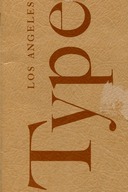
Los Angeles Type Founders
1937 - 1990s. Los Angeles, CA. Acquired Typefounders, Inc. [of Phoenix]. Acquired by Barco.

Northwest Type Foundry
fl. 1930s - 1950s. Minneapolis, MN. [TO DO: (1) cite Inland Printer ads. (2) add photos of my Northwest Type Foundry stereotype plate caster.] Not to be confused with the 19th century Northwestern Type Foundry in Milwaukee, WI.
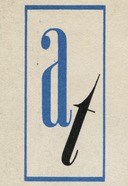
Acme Type Foundry
1939-? Chicago. Harry Burke.
N.B. A note here about "line service" and "reproduction proofs" offered by the foundry. Acquired by Barco.
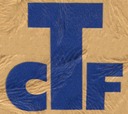
California Type Foundry
1941 - ? San Francisco, CA. Not to be confused with the 19th century California Type Foundry.

[US] National Type Founders (Akron, OH)
1940s-1950s. Akron, OH.
Distinct from the National Type Foundry (Chicago, 1890s), National Type Foundry (Bridgeport (CT), 1920s), National Type Company (Jackson (MI), 1930s), and the National Type Foundry (Pittsburgh (PA), 1930s).

[GDR] Offizin Andersen Nexö
fl. post-WWII through at least 1988. Leipzig. Offizin Andersen Nexö. All I know of this foundry is that Henning Krause (user "berlintypes") on flikr has a photograph of the cover of a specimen book of theirs, dated 1988.
Baltotype
? - 1978. The Baltimore Type & Composition Co. And Baltimore Matrix (its commercial matrix division). Baltimore.
N.B. Information about their "sorts service." Also a "Schedule of Baltotype Font Schemes."
Unrelated to the earlier Baltimore Type Foundry.

Chicago Type Foundry [Not Marder, Luse]
? - ? Presumably this "Chicago Type Foundry" was entirely separate from the Chicago Type Foundry of Marder, Luse & Co.

[UK] Stephen Austin & Sons
An English printing firm which engraved matrices both for in-house use and for sale. Monotype-compatible matrices (including some made for The Monotype Corporation Ltd.) Ludlow compatible matrices, and as they later acquired the Ludlow Typograph Company as Ludlow (UK), actual Ludlow brand Ludlow matrices.

Modern Matrix
Matrix engraving; at least for Ludlow matrices. Employed a Gorton pantograph. Equipment and patterns to Zack Hamric.

Monsen Typographers
Chicago. (Made at least some matrices.) May have acquired matrices for Companion Old Style engraved by Goudy himself; these matrices to Twin Quills Press.

[CA] Moore Type Foundry
fl. 1969. Toronto, Ontario, Canada. At present all I know of this foundry is the existence of three specimens (dated August 15, 1966, January 1969 (with price list), and June 1, 1973 (with February 1, 1974 price list inserted)). They were casting Lanston Monotype faces.

[CA] Dominion & Monarch Type Ltd
fl. 1974. Toronto, Ontario, Canada. I'm not yet sure if this was in fact a type foundry or merely a reseller of type. I know of them only through a single price list for leads, slugs, rule, borders, and furniture, dated 1974-04-01.

Kingsport Press
Tennessee. (Made or had made for them at least some matrices.)
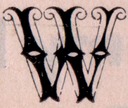
Weidemann
1940s - 1960s. Died 1981. Antique revivals; some materials to Typefounders, Inc. [of Phoenix]).
See also Replica Type Foundry. ( John Carroll)

[US] Kittypot Castings
1950s/1960s. Not a type foundry, but a type casting series offered by subscription by Steve L. Watt's; cast from ATF matrices by ATF.

[IN] India Type Foundry
1948 - ? Ahmedabad. Founded by the father of, and later owned by, Arvind M. Patel (d. 2010).

Barco / F & S
?-2010. Northlake, IL. Bensenville, IL. Primarily Monotype matrix casting. Acquired Los Angeles Type Founders (and through them the matrices of Typefounders, Inc. [of Phoenix] and Replica Type Foundry ( John Carroll)). Acquired Acme. Materials acquired by Skyline Type Foundry in 2010.

Quaker City Typefoundry
19?? - present. W. M. Riess, Prop. Currently active; see the List of Current Typefoundries.

[HK] Universal Type Foundry
? - ? Hong Kong. Cited in McGrew (1993) as producing copies of American faces. Keynote.

Continental Typefounders Assn., Inc.
? - ? [TO DO: scan catalog] Not a foundry, but an importer of European type to America.
Not to be confused with the later Amsterdam Continental Types, Inc.
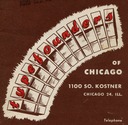
Castcraft / Typefounders of Chicago
1946 - ? Chicago. Acquired Neon in 1959. Acquired materials of Missouri-Central. Display mats acquired by the late John Hern. Küco casters and foundry matrices acquired by Gregory J. Walters Gregory J. Walters in 2008.

[CZ] Czech National Type Foundry
? - ? Prague. At present all I know of this foundry is that Paul Hayden Duensing cut his Monumental Open Capitals after failing to purchase them from it.

[UK] Startype
By 1950 - late 1980s. Birstall, West yorkshire. Some machines to Supertype (Brian Horsfall).

Qualitype
At present this is known only from a pin mark draw in a chart which might be by Herb Harnish .

[UK] Supertype (Brian Horsfall)
late 1980s? - present? Brian Horsfall. "For small founts of type." (letterpressalive) Possibly still active; I need to confirm this. Some machines from Startype. See http://www.letterpressalive.co.uk and Benjamin Brundell's site http://britishletterpress.co.uk/type/type-founders.

[FR] Marcel Lagrue & Cie.
fl. 1950. Paris. All I know of this foundry is that Henning Krause (user "berlintypes") on flikr has a photograph of the cover of a specimen book of theirs, circa 1950.

Harold Berliner
? - d. 2010. Private. Nevada City, California. Acquired matrices of E. H. ("Pat") Taylor's Out of Sorts Letter Foundery). Materials to Offizin Parnassia Vättis).

Morneau Typographers
Fl. 1970s in Phoenix, Arizona. A firm of advertising typographers (not themselves a typefoundry) which was intertwined with the history of Typefounders, Inc. (of Phoenix) (and through them Skyline), Klinke/NA Graphics, and Castcraft / Typefounders of Chicago.
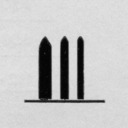
Marshall Trading
Fl. ca. 1956. In this period, "The Rule House of Marshall Trading in Newark, New Jersey" cast typemetal rule on Elrods, and also "fancy borders," for sale by ATF type dealers.

Replica Type Foundry
ca. 1955 ff. New York City. Miami Beach. John Carroll Antique revivals. All I know of this foundry so far is one citation in McGrew, p. 341. McGrew attributes these faces to Carroll: Argentine (1962). Claytonian (1964). Columbine (1964). Cordon (1963). Corinthian (n.d.) Delraye (1965). Gold Rush (1950s). Harlequin (1963). Motto (1963). Rustic (1962). Scroll Shaded (1963). Some materials (at least) to Typefounders, Inc. [of Phoenix] (and thence to Los Angeles Type Founders -> Barco / F&S -> Skyline Type Foundry).
See also Harry Weidemann.

[CA] Pygment Press and Type Foundry
1967-present. Dan Jones. Formerly Pygmy press. Although the current name is Pygment, Jones says that "both names are OK to use." Newmarket, Ontario, Canada.

P.A.S.T.
Peat And Son Typefoundry. David W. Peat. ? - present. At present (2012) for the most part providing castings done in collaboration with other foundries.

[UK] C. Richards & Sons (Typefounders) Ltd.
by 1964 - to at least 1993. { Moseley et. al., Founder's London A-Z , 12.}

John Hern
? - ? Private? Acquired the (regular Monotype) display matrices of Castcraft. Matrices and some other materials to Skyline Type Foundry.
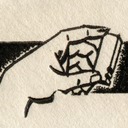
Typefounders, Inc. [of Phoenix]
? - 1967 Phoenix, Arizona. Specialized in "antique" (meaning here 19th century) revival faces. Acquired by Los Angeles Type Founders.

Textype
1960s? Philadelphia. Cast type for Multigraph relief printing (this is type on a short "T" body). [TO DO: scan catalog]
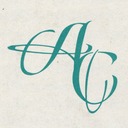
Amsterdam Continental Types, Inc.
fl. 1960s. NY, Chicago, Burbank. Not a typefoundry, but an importer of European types.
Not to be confused with the earlier Continental Typefounders Association, Inc..

Andrew Dunker
? - ? Jackson, Michigan. Private. A pioneer in amateur matrix electroforming. His matrices have been distributed variously, and many have now been acquired and cast by Skyline Type Foundry.
There is no information at present as to whether or not there was any connection between Dunker and the National Type Company, other than the fact that both were located in Jackson, Michigan at the same time.

Paul Hayden Duensing
? - ? ? and Kalamazoo, Michigan. The Private Press and Typefoundry of Paul Hayden Duensing. Duensing was an important figure in the preservation of typecasing in America and in the American Typecasting Fellowship.

Perfection
? - ? Minneapolis. Both a foundry in its own right and an ATF type dealer. Materials acquired by Skyline Type Foundry.

[IN] Associated Type Foundry
? - ? Poona [now Pune], India. I have a single sheet showing Laxmi Bold (12pt, 18pt) and Atul (24pt, 36pt). Poona officially adopted the spelling "Pune" in 1976; the specimen states the foundry's address as "64 Budhwar Peth, Poona 2", but of course they might not have adopted the reformed spelling.
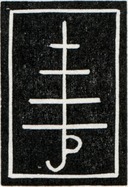
Cade Type Foundry
1972 - 1990s. Winchester, MA. Philip Cade. Private. Disposition unknown.

Zack Hamric
Matrix engraving; at least for Ludlow matrices. Employed a Gorton pantograph. Equipment and patterns to Zack Hamric.
In 1978, the American Typecasting Fellowship first met. It remains the heart of the renaissance of typefounding in the 21st century.
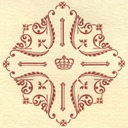
Michael & Winifred Bixler
197? - present. Skaneateles, NY. The Press & Letterfoundry of Michael and Winifred Bixler. Currently active; see the List of Current Typefoundries.

Hansestadt Letterfoundry
? - ? St. Paul, Minnesota. Active in 1985, at least.

Hill and Dale
1970s-present. Terra Alta, WV. The Hill and Dale Private Press and Typefoundry. Richard L. Hopkins. Private; the link here goes "up and over" to the Fine/Private Press and Amateur Typefounding Notebook.

Golgonooza
?-present. Dan Carr [d. 2012-06-26] and Julia Ferrari. Currently private. But in 1985 (at least) offered handset or machine composition (Monotype).

Suburban Letter Foundery
?-? [1970s?] Larchmont, NY. Casting Goudy designs. Became Out of Sorts Letter Foundry?

Out of Sorts Letter Foundry
?-? [1970s?] Larchmont, NY. E. H. (Pat) Taylor, APA 381. Also "Out of Sorts Press and Letterfoundery." Taylor taught Theo Rehak the use of the Monotype OA display caster. Evolved out of Suburban Letter Foundery? Cited as active in 1985 by { Duensing, Paul Hayden. "Metal Type: Whither Ten Years Hence?" Fine Print. Vol. 11, No. 1 (January, 1985): 22 } Matrices acquired by Harold Berliner's Typefoundry by 1992.

Gregory Jackson Walters
?-present. Piqua, OH. Private collector. Has done matrix electroforming. A truly extraordinary gentleman wihout whom much of the typecasting machinery and matrices of the past would have been lost.

Fritz Klinke / NA Graphics
?-present. Silverton, CO. Primarily a general letterpress supply house (and a pillar of the letterpress community), with longstanding involvements in type production. Purchased NA Graphics from the late Hal Sterne. Purchased the former matrix rental operation of Charlie Broad which had been operated in conjunction with Morneau Typographers from Morneau Typographers in 1989. Acquired machinery from ATF for producing brass and copper thin spaces (still operates as required). Elrod casting of strip material. Works with and resells type from The Dale Guild. Website: www.nagraph.com.

[UK] Mouldtype
? - ca. 1992. Dunkirk Lane, Preston, Lancashire. Monotype casting. Type imported into the United States by Amsterdam Continental Types, Inc.. Machines went to a museum in Japan; disposition of matrices unknown.

[IN] Rajratan Type Foundry
1980 - ? Ahmedabad, India. Successors to Rajnagar Type Foundry. Partnership of that foundry dissolved June 1980. "Immediately after that the majority of the parters has continued the same business under the new name of 'RAJRATAN TYPE FOUNDRY.'" {Rajratan Type Foundry. Introducing New Attractive English & Gujarati Type Faces. (1983)};

[UK] Acorntype (John Eickhoff)
?-2005. Bristol. John Eickhoff. Materials to Offizin Parnassia Vättis). See also Benjamin Brundell's site http://britishletterpress.co.uk/type/type-founders.
Eickhoff died 2008-10-13. An obituary written by Paul W. Nash appeared in Printing History News, No. 22 (Spring 2008); this is online at http://printinghistoricalsociety.org.uk/NEWS22a.pdf

Swamp Press Monotype Letter Foundry
?-present. Ed Rayher. Currently active; see the List of Current Typefoundries.

[UK] Whittington Press
1971 - present. John and Rosalind Randle. A fine press which has, inter alia, published the journal Matrix. Monotype Composition Casters and Supercasters. Their matrix collection includes the collection of the Oxford University Press (which ceased printing in 1986). Currently (2011) "casting up some of our rarer founts for sale." http://www.whittingtonpress.com/

[UK] Hubbard Type Foundry
?-2008. North Walsham, Norfolk, UK. Brian Hubbard. Cast on a Monotype Super Caster.
Hubbard died 2008-12-26. An obituary written by Tony Smith appeared in Printing History News, No. 23 (Summer 2008); this is online at http://printinghistoricalsociety.org.uk/NEWS23a.pdf

[UK] Caslon Limited
?-present. St. Albans, UK. Richard Caslon. Roy Caslon. This firm claims to be the successor to William Caslon (although most sources indicate that that firm was sold to Stephenson, Blake in 1937). Caslon Limited is presently in business selling printing supplies. In 1990 they acquired Adana in 1990, and still maintains that brand (selling supplies and refurbished presses).
http://www.caslon.co.uk/ Their website also includes a font scheme ("Type Synopsis") for fonts of type sold for the Adana: http://www.caslon.co.uk/Adana_Type_Synopsis_2008.pdf

[FR] Imprimerie Nationale (Privatized)
1994 - present. Paris. Privatized successor to the Imprimerie Nationale; now the Groupe Imprimerie Nationale. Primarily a computer security firm; maintains the former Imprimerie Nationale as studio, the Atelier du Livre d'Art et de l'Estampe.

The Dale Guild
1993 - present. Founded on the ashes of ATF. Currently active; see the List of Current Typefoundries.

Monumental Press & Typefoundry
19?? - present. Union, Missouri. Bob Magill. Currently active; see the List of Current Typefoundries.

[UK] Letterpress Works / The Hell-Box Letter Foundry
1990s? - present. Ed Denovan. Currently active; see the List of Current Typefoundries.

[UK] Stephenson, Blake & Co. (2000)
2000 - present. Firm revived by Tom Stephenson in 2002, originally selling brass rule and zinc type. Acquired in 2004 by three employees (Terry Lee, Steven Bond, Neville Buckle) as an engineering firm which also produces brass rule (no type). See the List of Current Typefoundries.
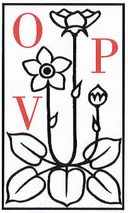
Offizin Parnassia Vättis
2001-present. Switzerland. Hans-Ulrich Frey and Stephan Burkhardt. Materials from Harold Berliner. Materials from John Eickhoff. Have re-cut William Morris' Troy Type.
Currently active; see the List of Current Typefoundries.

Jim Rimmer
?-2010. Private. Apprenticed at J. W. Boyd and Sons (in at least 1951) {[printed note of greeting to the typecasting community], ATF Newsletter No. 7 (February, 1982): 7} Succeeded by Green Boathouse Press. The film Making Faces (2010) by Richard Kegler of the P22 digital foundry is an excellent presentation of Rimmer's methods.

Mel Arndt
?- present. Toledo. I believe that Mel is primarily a fine printer, but he CNC-milled a splendid 120 point matrix (of the American Typecasting Fellowship logo) for the 2010 ATF conference in Piqua.

C. C. Stern
Presently undergoing rebirth as a working museum. Online at: http://www.ccsterntype.org/.
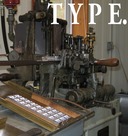
Skyline Type Foundry LLC
2004-present. Prescott, AZ. Has acquired, inter alia, significant materials from Perfection Type Foundry, much of the typefounding material of John Hern, Barco Type Founders / F&S Type Founders (and through them Los Angeles Type Founders, Typefounders, Inc. (of Phoenix), Replica Type Foundry ( John Carroll), etc.) Currently active; see the List of Current Typefoundries.

[UK] The Type Museum
Acquired the (English) Monotype company. Acquired the materials of Stephenson, Blake, & Co. (who by then had acquired Caslon, Cottrell/Fann Street (thus Fry), Jackson/Caslon III & IV, and Figgins, at least).

[ES] Imprenta Municipal
? - 2008 [Neufville/Bauer materials] - present. The printing museum of the City of Madrid. Acquired at least a part of the materials of Neufville ( Bauer). Has intentions of casting.

Virgin Wood Type
2010-present. Rochester, NY. Acquired materials of American Wood Type Manufacturing Company Currently active; see the List of Current Typefoundries.
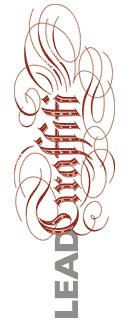
Lead Graffiti
2010 [as a wooden type maker] - present. Wood type. Ray Nichols, Jill Cypher, and Tray Nichols. Currently active; see the List of Current Typefoundries.
Anon. "The Typefoundries of the United States." The Inland Printer [see note below]
de Jong, Cees W., Alston W. Purvis, Jan Tholenaar, eds. Type: A Visual History of Typefaces and Graphic Styles. 2 volumes. (Köln: Taschen, 2009.)
Mullen, Robert A. Recasting a Craft: St. Louis Typefounders Respond to Industrialization (Carbondale, IL: Southern Illinois University Press, 2005) ISBN: 0-8093-26361-1.
Reed, Talbot Baines. A History of the Old English Letter Foundries. London: Elliot Stock, 1887.
(1) Most of the foundries listed here are defunct, and of those presently in business some are strictly private foundries (divisions of fine presses, casting for in-house use). Click here for a list of currently active typefoundries which sell to the general public.
(2) In the 20th century most type was not produced by traditional typefoundries. For a full picture of metal type, see the List of All Type Specimen and Matrix Information on CircuitousRoot
(3) (This will be "obvious" to those experienced with printing or metal type catalogs, but is not necessarily obvious to the novice.) There are three kinds of "specimen books":
All portions of this document not noted otherwise are Copyright © 2011 by David M. MacMillan and Rollande Krandall.
Circuitous Root is a Registered Trademark of David M. MacMillan and Rollande Krandall.
This work is licensed under the Creative Commons "Attribution - ShareAlike" license. See http://creativecommons.org/licenses/by-sa/3.0/ for its terms.
Presented originally by Circuitous Root®